#1 – Swiss Chard
Swiss chard is a versatile leafy green that thrives in both cool and warm weather. It is rich in vitamins A, C, and K, making it a nutritious choice for any garden.
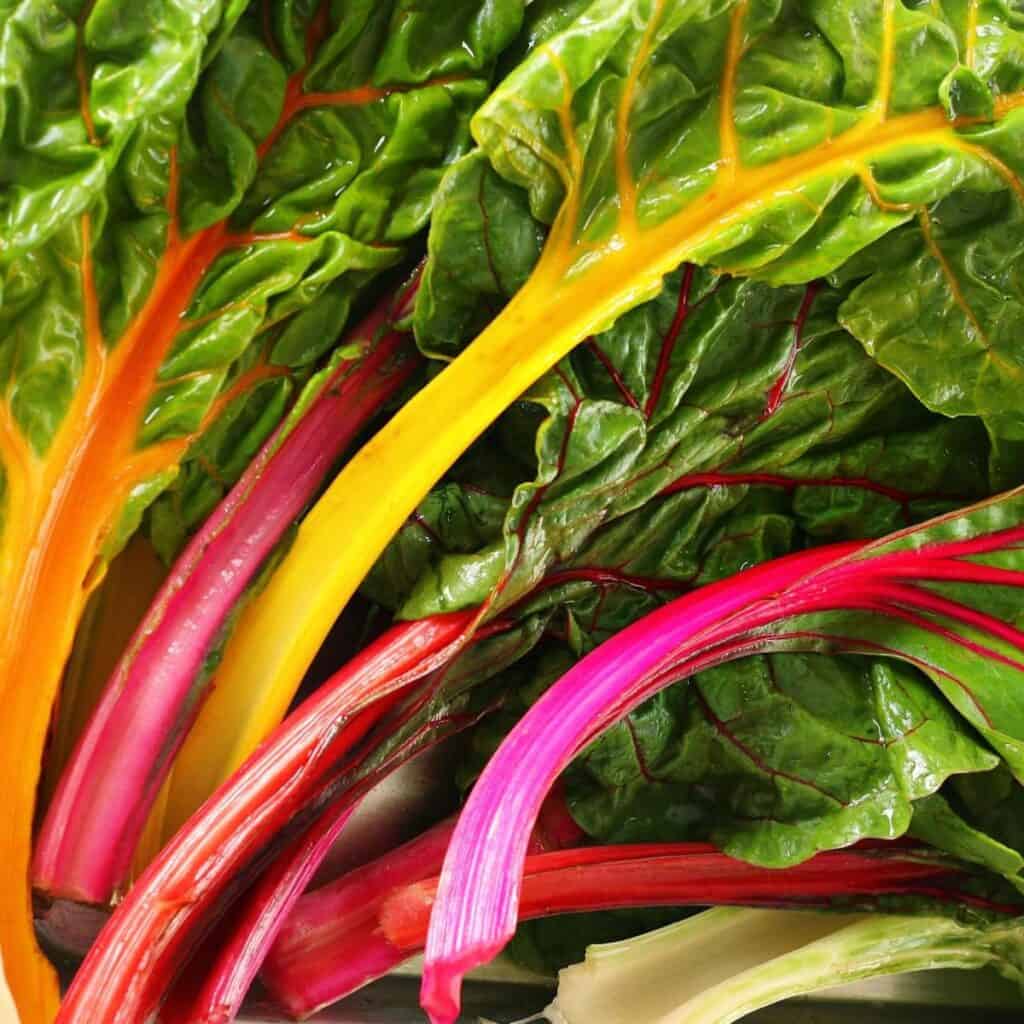

You can plant Swiss chard by putting the seeds about half an inch deep in the soil. Make sure to leave about six inches of space between each seed so they have room to grow.
Swiss chard prefers well-drained, fertile soil and needs full sun for optimal growth. It can tolerate some shade, making it suitable for different garden situations.
It is relatively low-maintenance and can provide a steady supply of greens throughout the fall. Regular harvesting encourages continual growth, allowing for multiple harvests.
#2 – Kale
Kale is a popular choice for autumn gardens. This leafy green thrives in cooler weather and can be planted in August for a fall harvest.
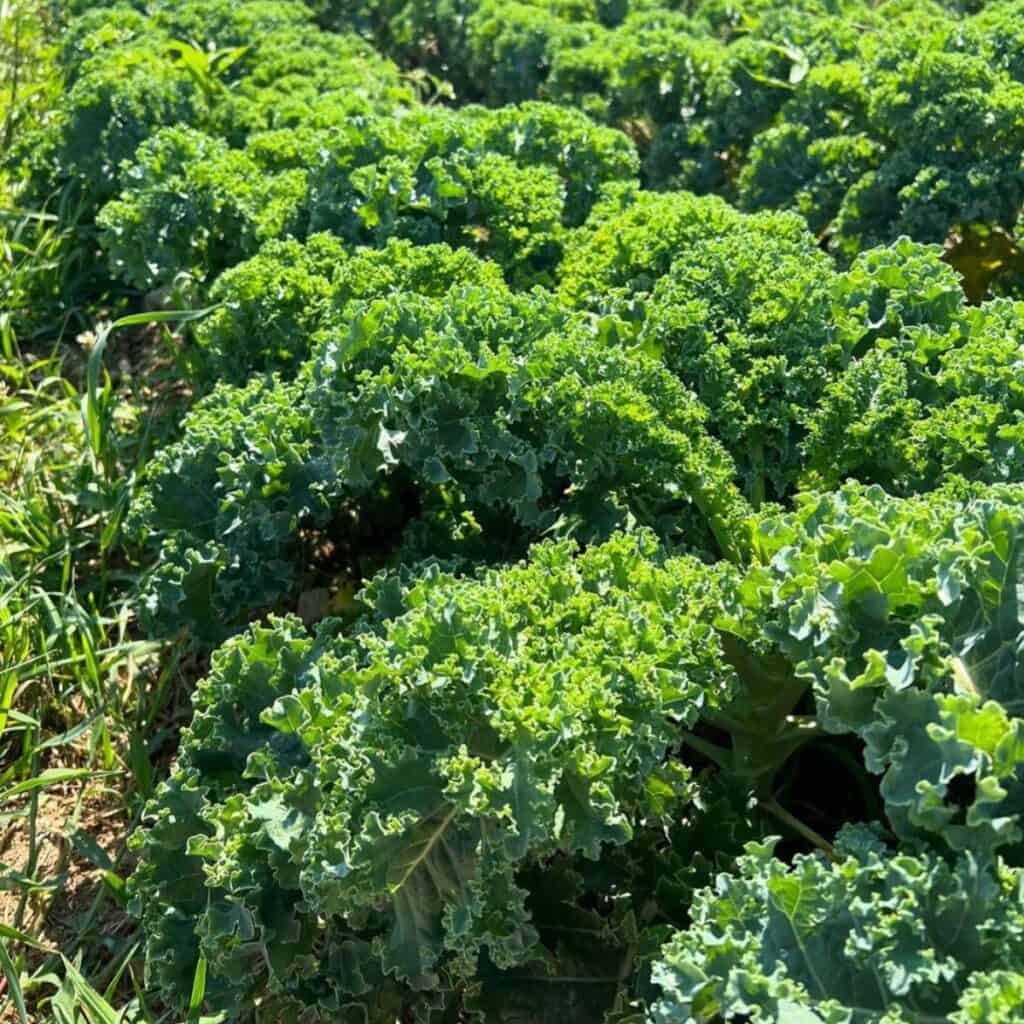

It typically takes about 50 to 65 days to mature. This allows gardeners to enjoy fresh greens even after the first frost sets in.
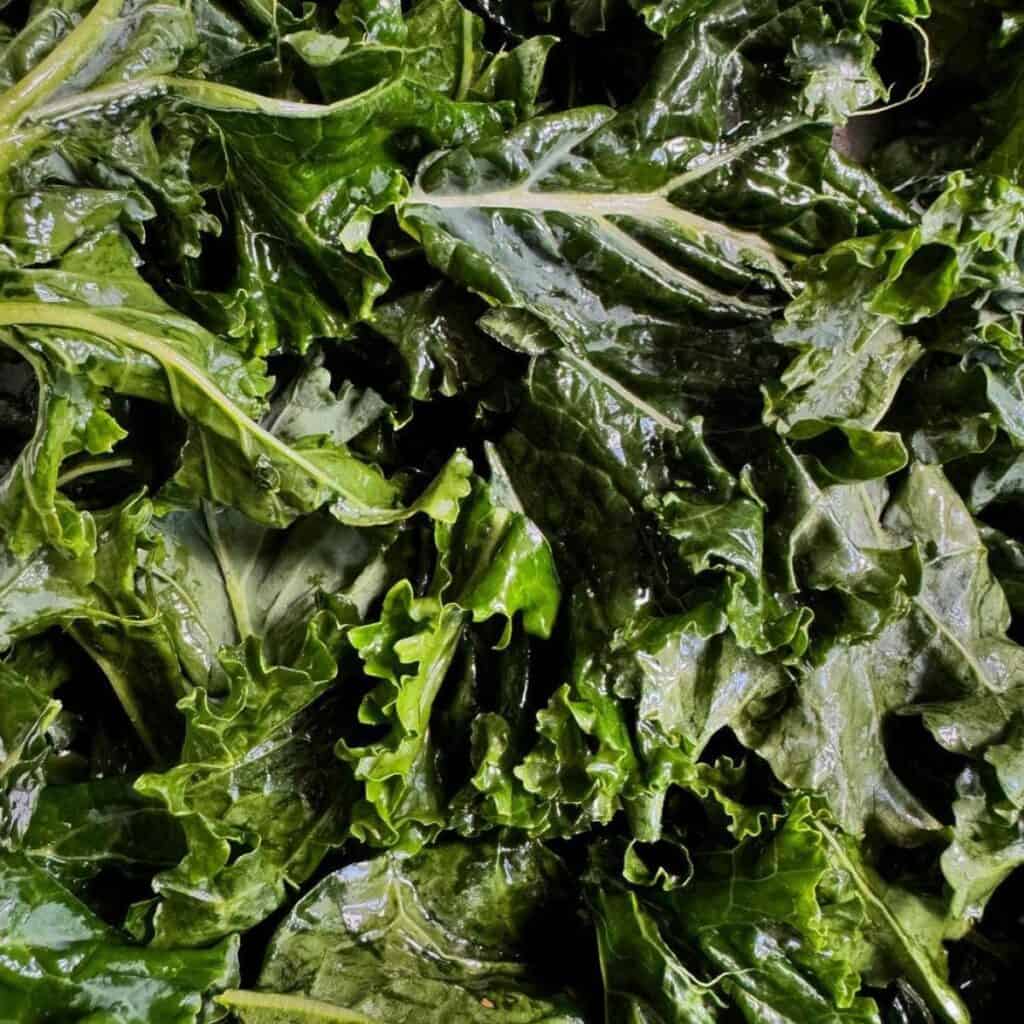

Kale is versatile and can be used in salads, soups, or smoothies. It is packed with vitamins A, C, and K, making it a nutritious meal addition.
For the best results, plant kale directly in well-draining soil. Consistent watering is important, especially during dry spells.
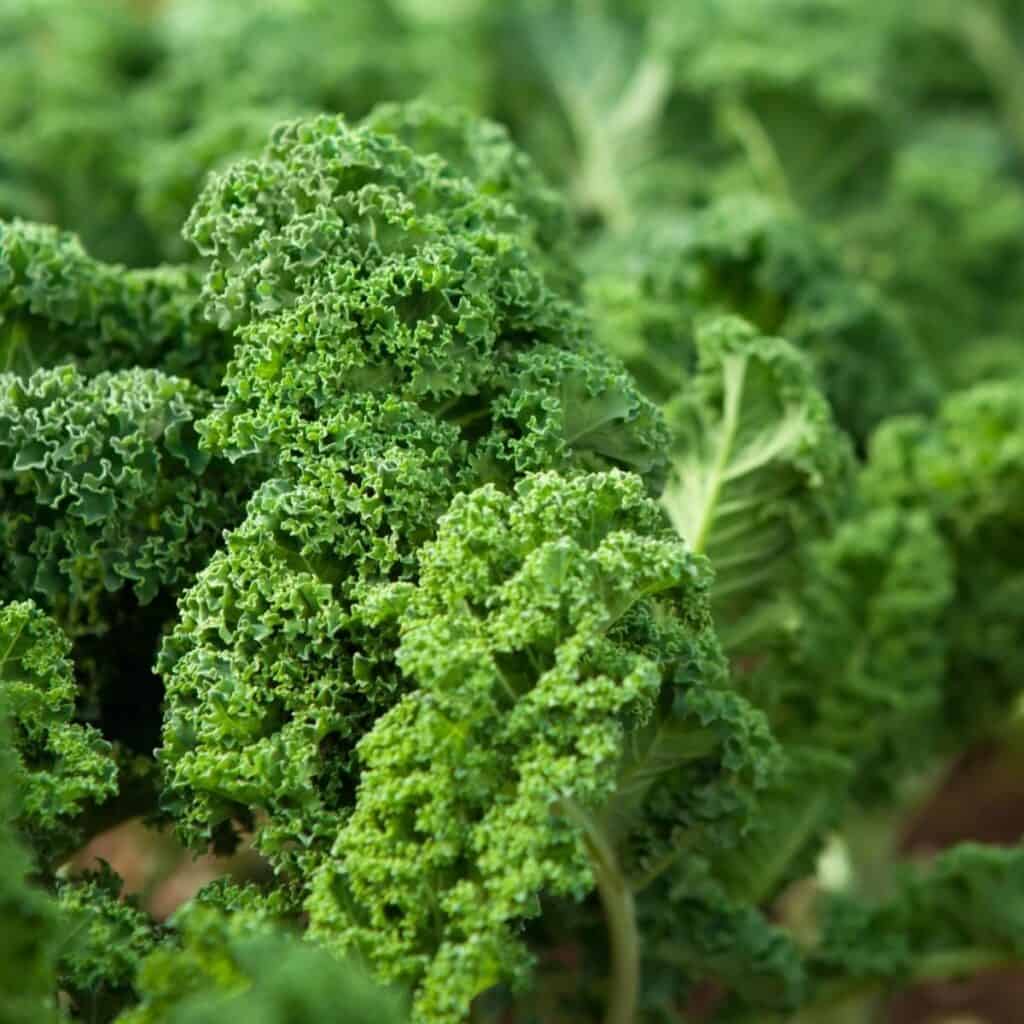

Varieties of kale include curly, lacinato, and Siberian kale. Each type has its unique flavor and texture, offering options for different culinary uses.
Planting kale in late summer helps ensure a steady supply of fresh greens throughout the fall and winter months.
#3 – Carrots
Carrots are a popular vegetable for fall gardens. They thrive in cooler weather, making August an ideal time to plant them for a late fall harvest.
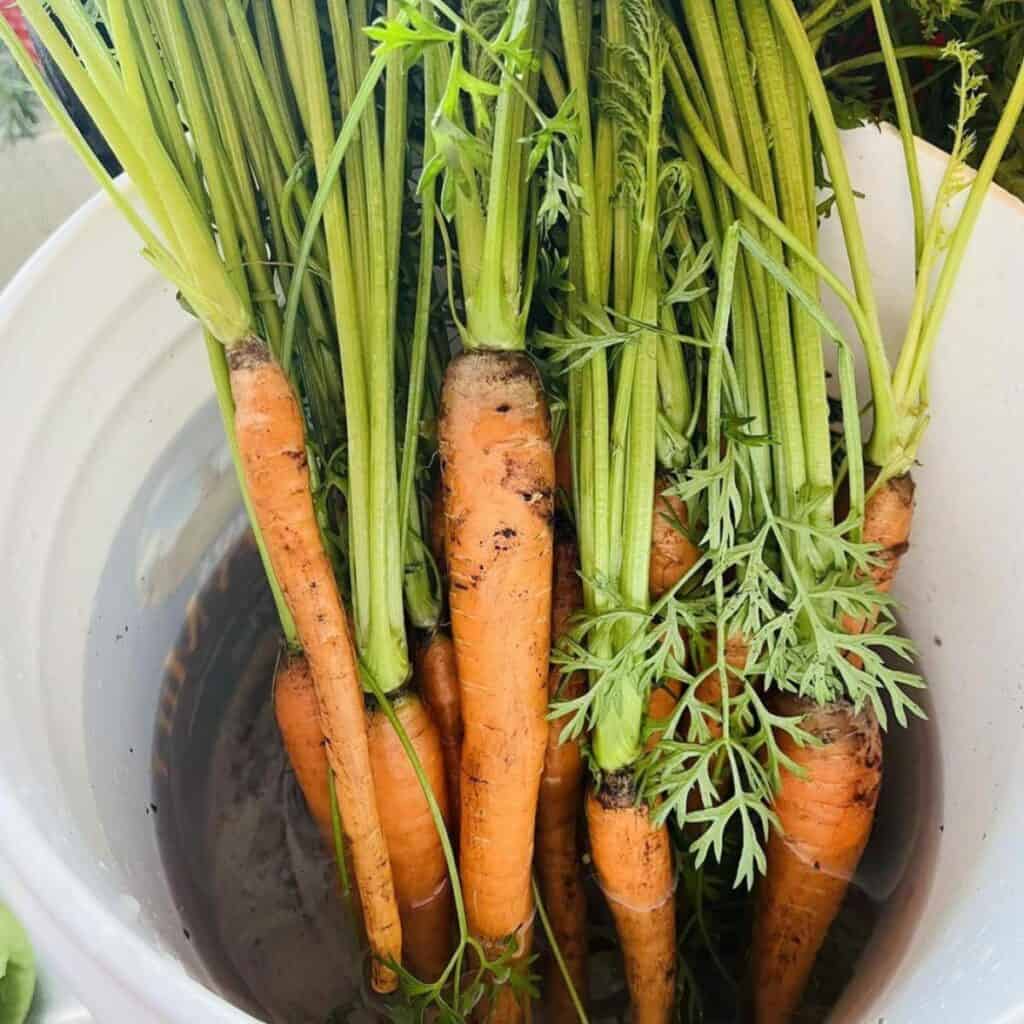

These root vegetables require loose, well-draining soil to grow properly. Preparing the soil by removing rocks and breaking up clumps is best.
Carrots need full sun to develop their best flavor. They are typically sown directly into the ground, with seeds placed about 1/4 inch deep.
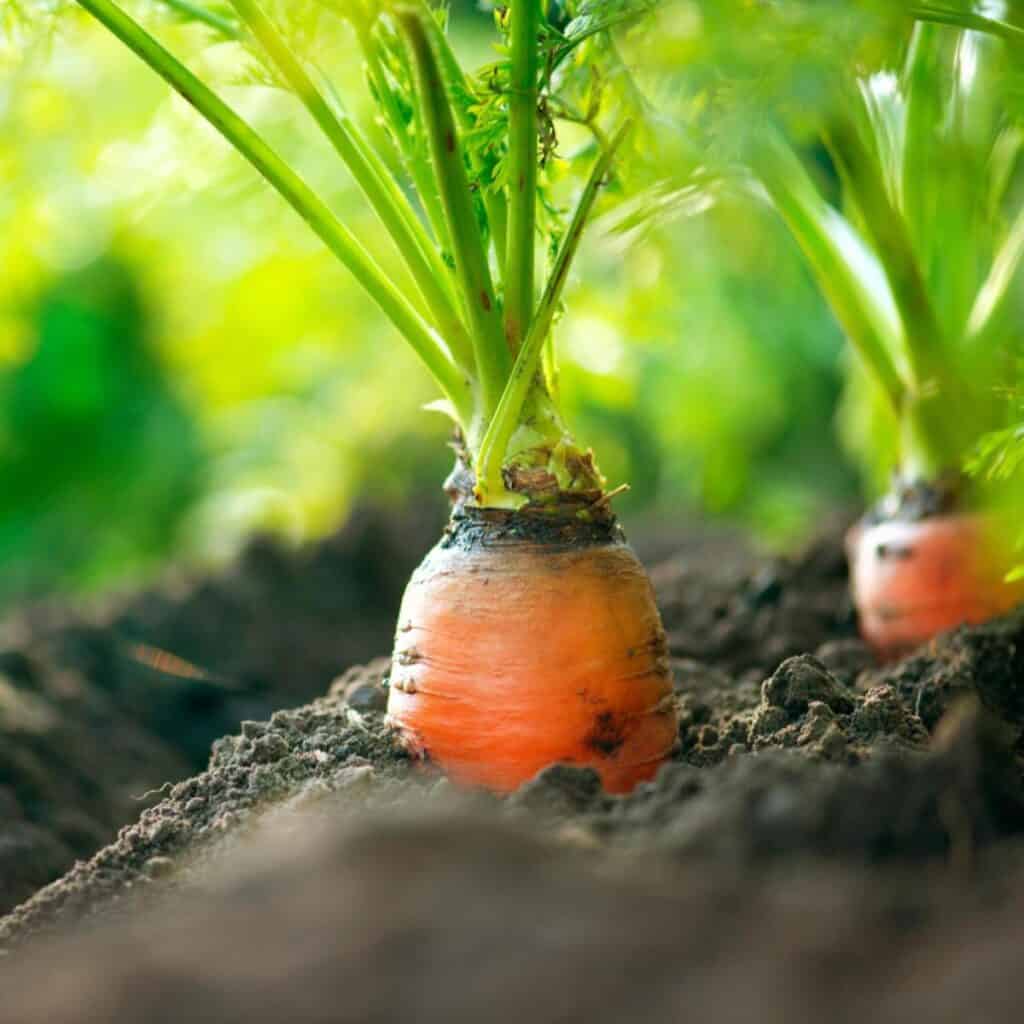

Watering is important, especially during dry spells. Consistent moisture helps carrots grow evenly and stay tender.
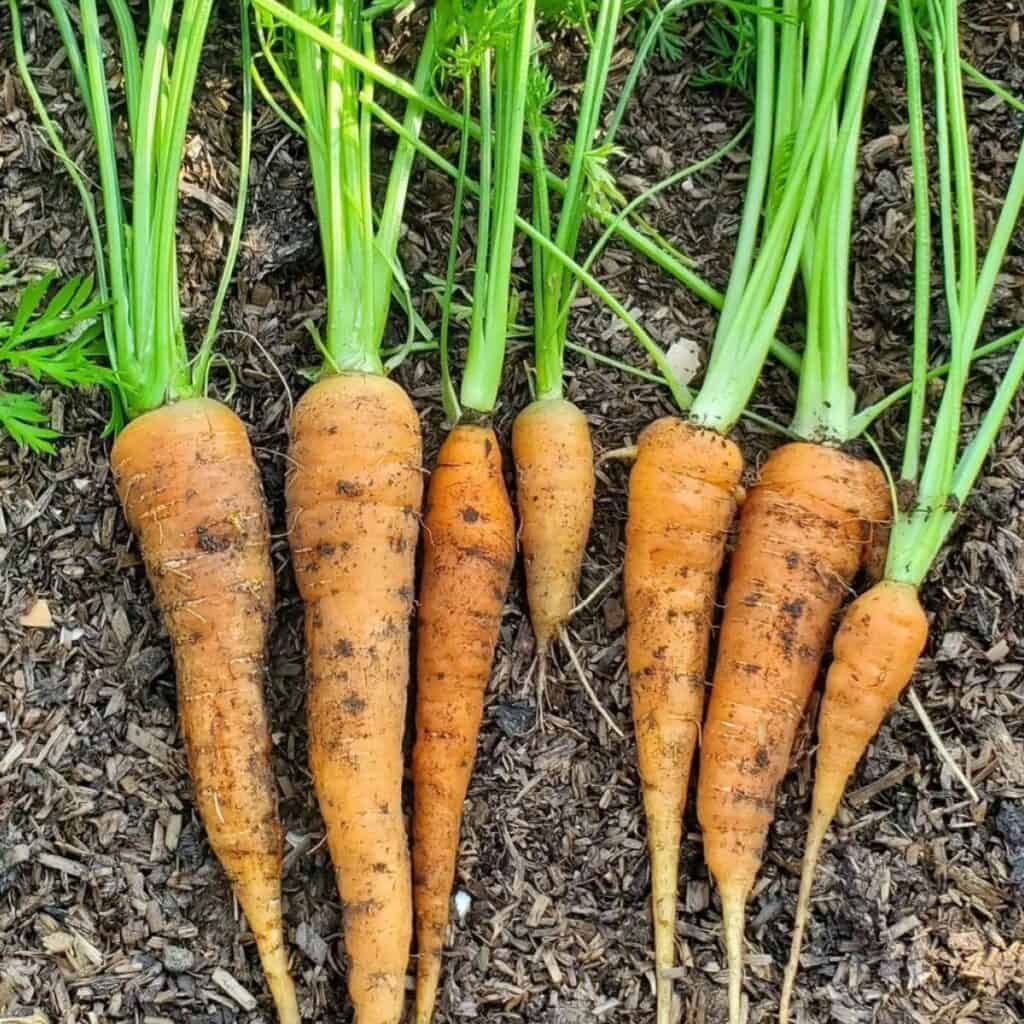

Harvesting carrots can begin when they reach a desirable size. They can be left in the ground until needed, as cold weather can enhance their sweetness.
#4 – Lettuce
Lettuce is an excellent choice for planting in August. It grows quickly, making it ideal for a fall harvest. Varieties such as Romaine, Butterhead, and leaf lettuce thrive in cooler temperatures.
This vegetable prefers rich, well-draining soil. It grows best when the soil is a little bit acidic, between pH 6.0 and 7.0.
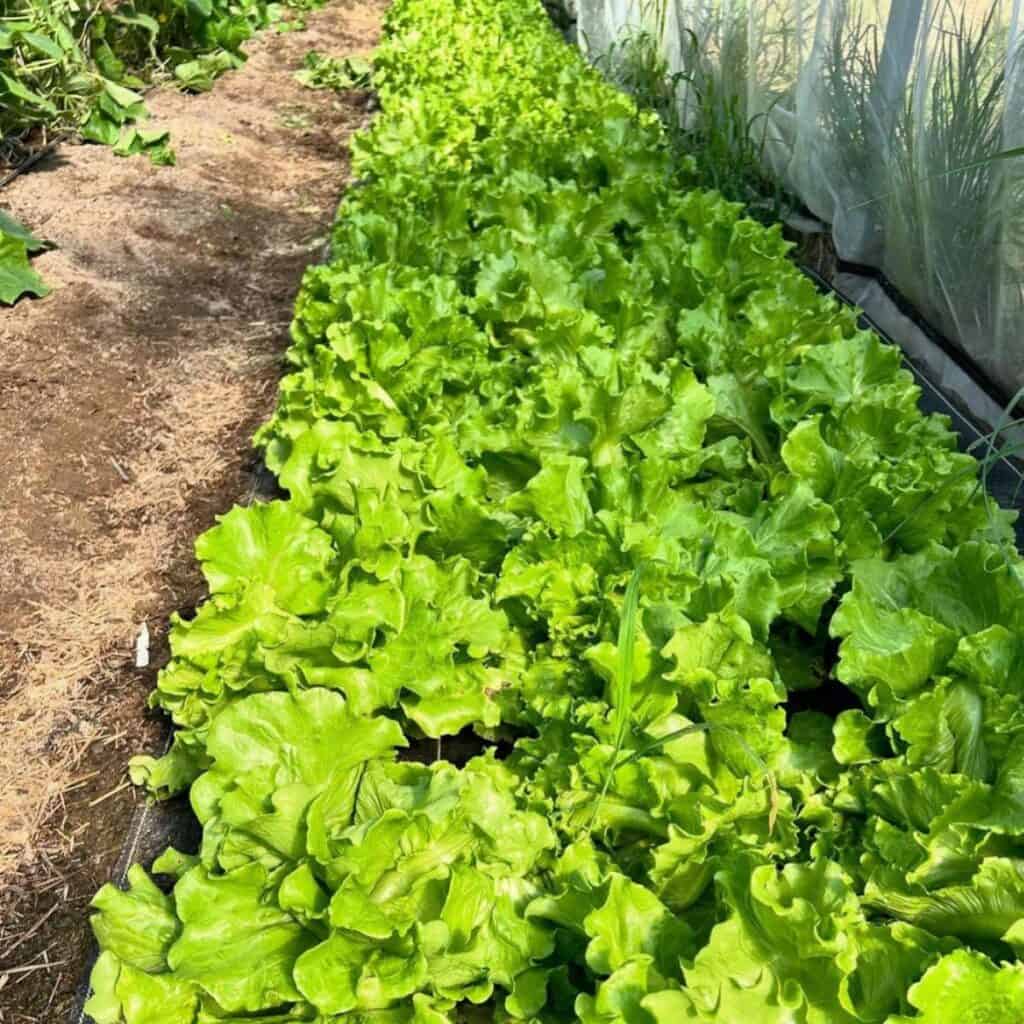

Lettuce can be planted in full sun or partial shade, providing flexibility for garden placement.
Growing lettuce is relatively easy, especially with heat-tolerant varieties during the warmer months.
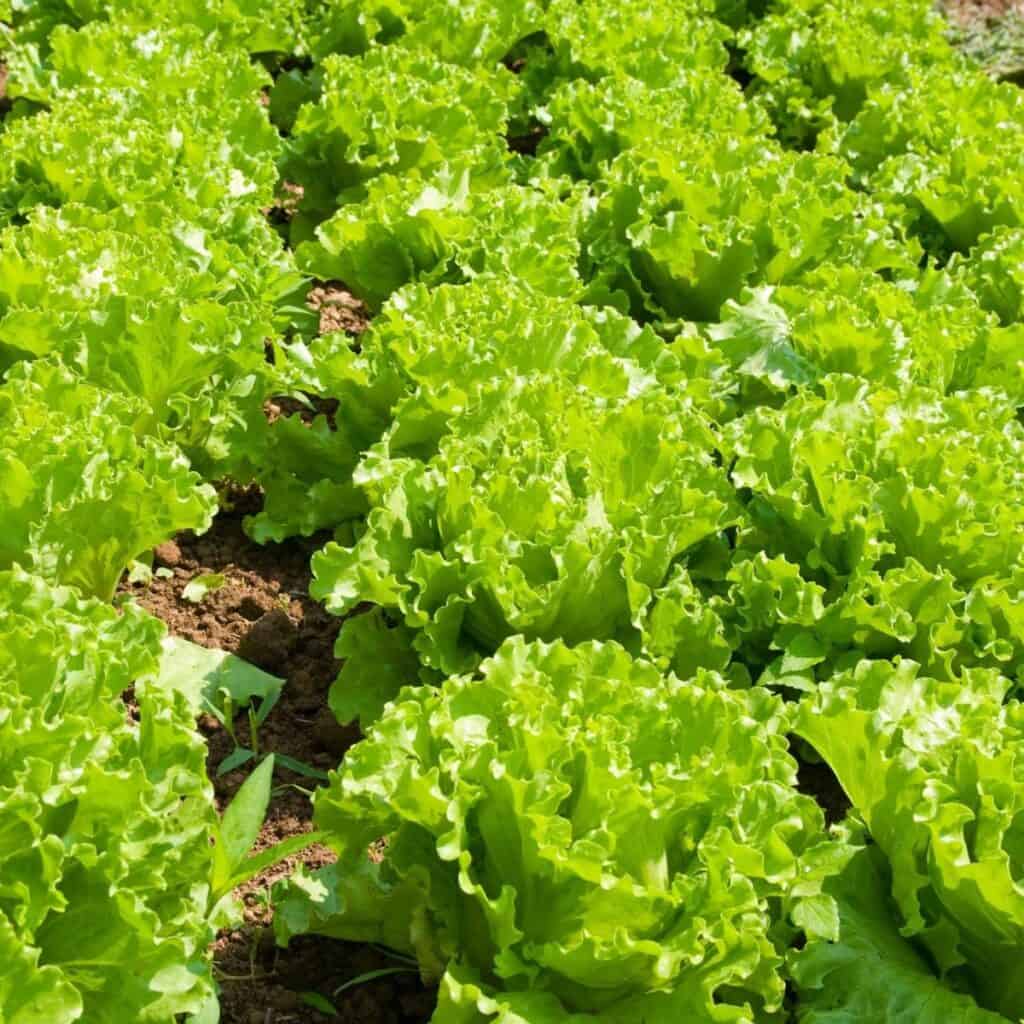

Planting in August allows for a continuous harvest until late fall. Proper watering will help maintain the leaves’ crispiness.
With proper care, lettuce can be a rewarding addition to any fall garden. It offers fresh, delicious leaves for salads and sandwiches as the weather cools down.
#5 – Radishes
Radishes are a popular choice for summer gardens. They are quick-growing root vegetables, making them perfect for planting in August for a fall harvest.
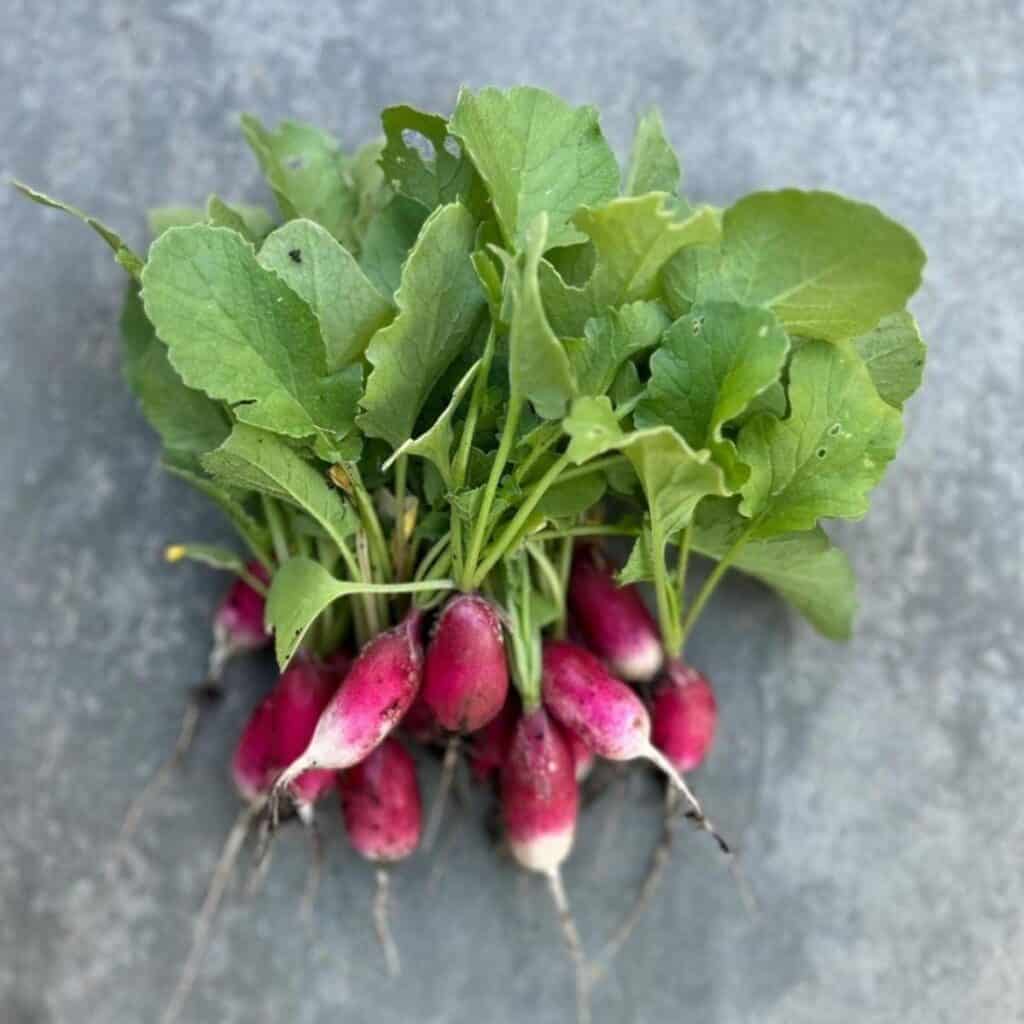

These vegetables thrive in cooler weather and can be ready for harvest in about 25 to 30 days. This fast growth allows for multiple rounds of planting.
Radishes prefer well-drained soil. They grow best in full sun but can tolerate some shade.
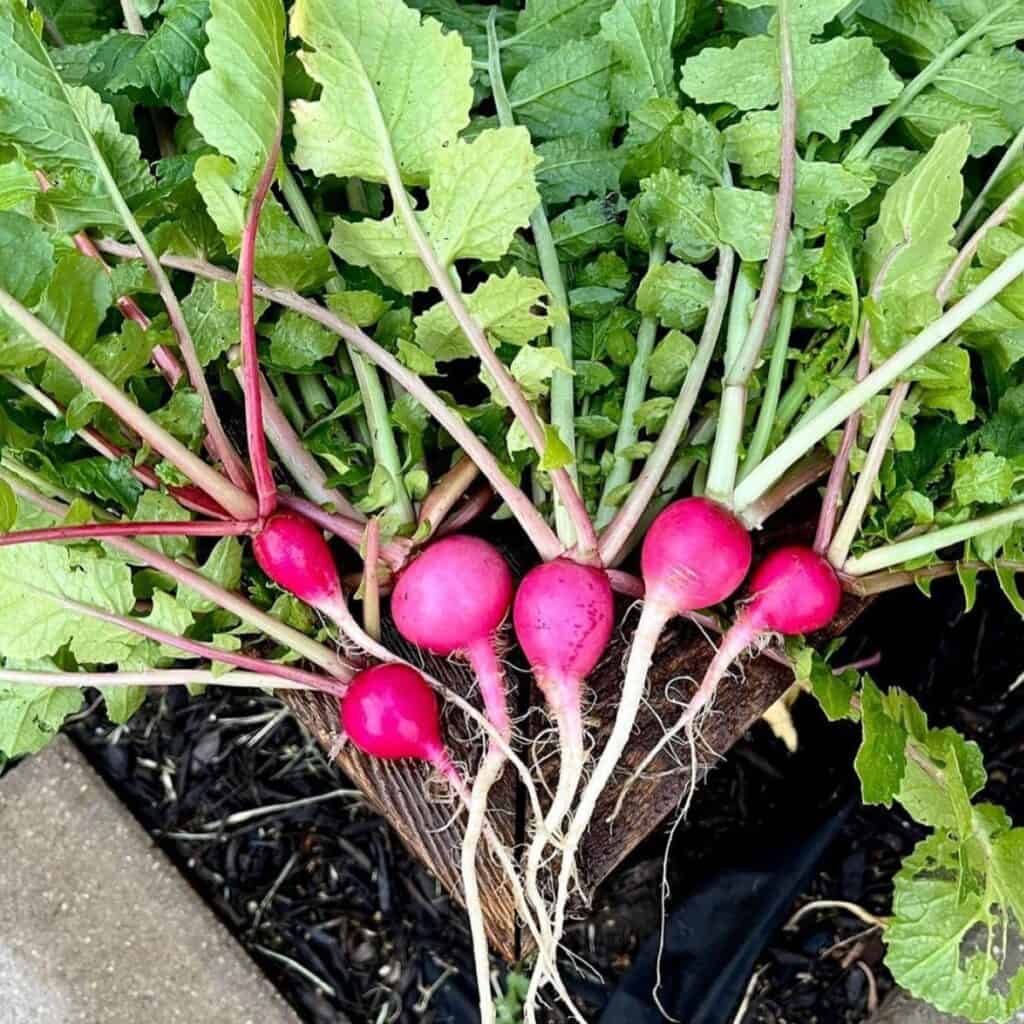

It’s important to space them about 1-2 inches apart for optimal growth.
Different varieties offer unique flavors and colors. Some common types include red, white, and black radishes. Each type has its own taste profile, adding diversity to dishes.
Overall, radishes are easy to grow and require little maintenance. Their crisp texture makes them a delightful addition to salads or as a snack.
#6 – Spinach
Spinach is a great vegetable to plant in August for a fall harvest. It grows well in cooler temperatures, making it a perfect crop for late summer planting.
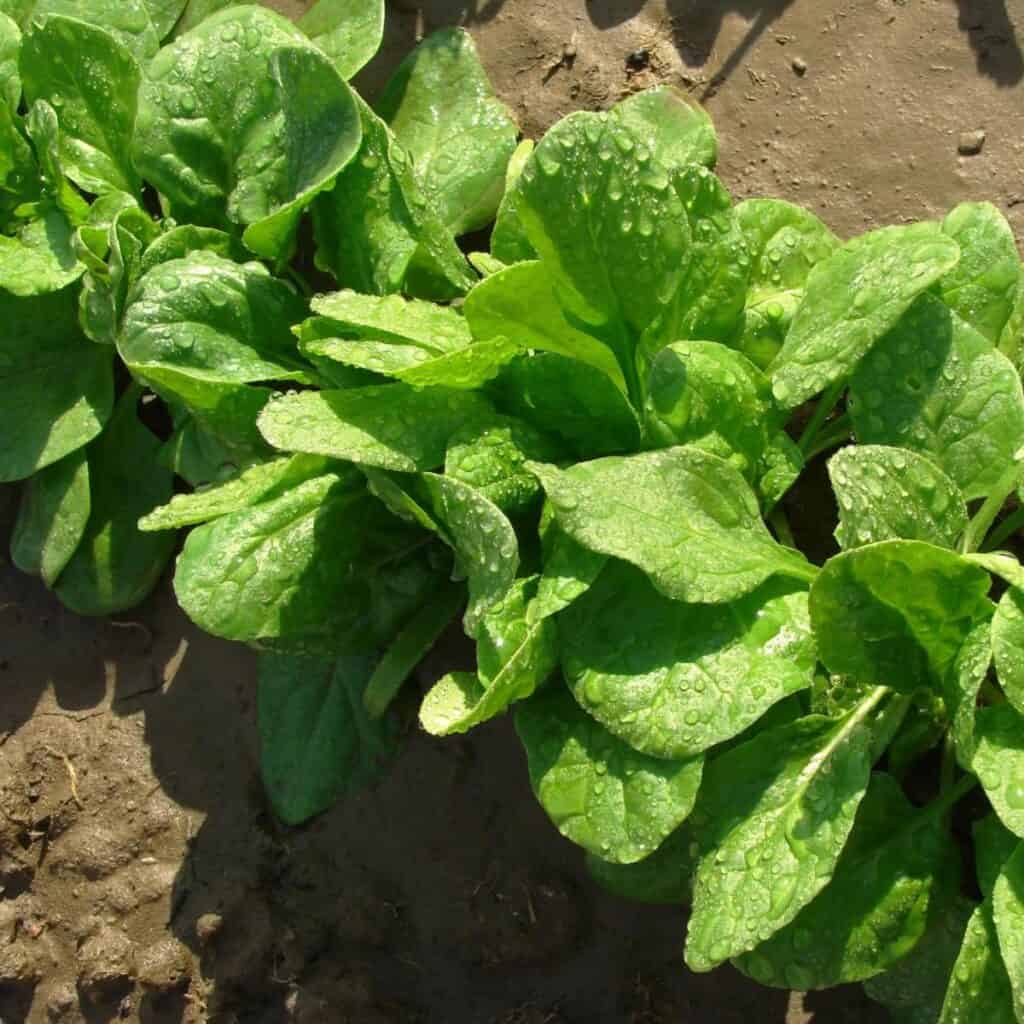

This leafy green matures quickly, usually within 30 to 45 days. Spinach can be harvested multiple times if picked correctly.
Growing spinach in well-drained soil helps ensure strong growth. It prefers full sun but can tolerate partial shade, especially in warmer areas.
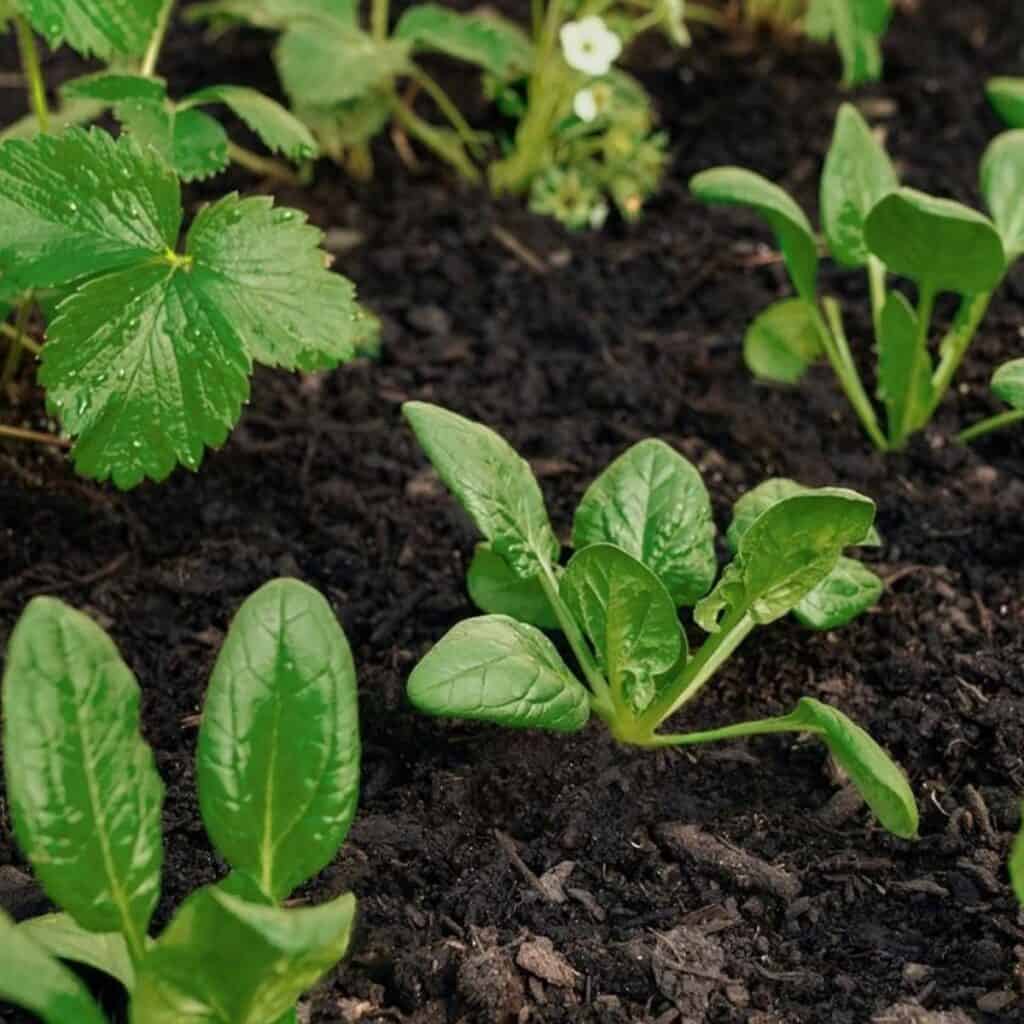

For the best results, keep the soil consistently moist. Spinach will often thrive even after a light frost, which can enhance its flavor.
With easy cultivation and quick growth, spinach is a smart choice for any gardener looking for fresh greens in the fall.
#7 – Beets
Beets are a versatile vegetable that thrives in cooler temperatures. They can be planted in August for a harvest in the fall. Gardeners often appreciate the vibrant colors and earthy flavor of beets.
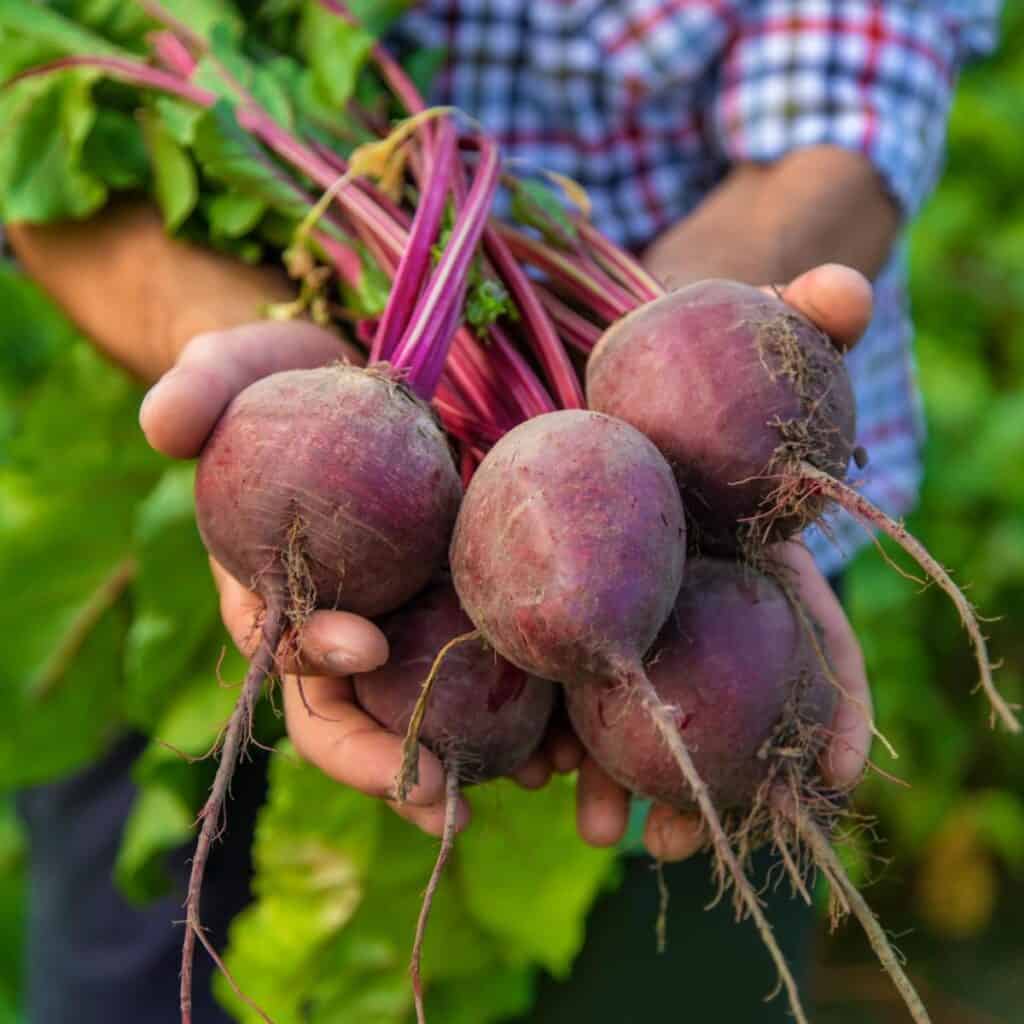

These vegetables take about 2-3 months to mature. They can be harvested as baby beets or grow larger for a different taste and texture. The leafy greens of beets are also edible and healthy.
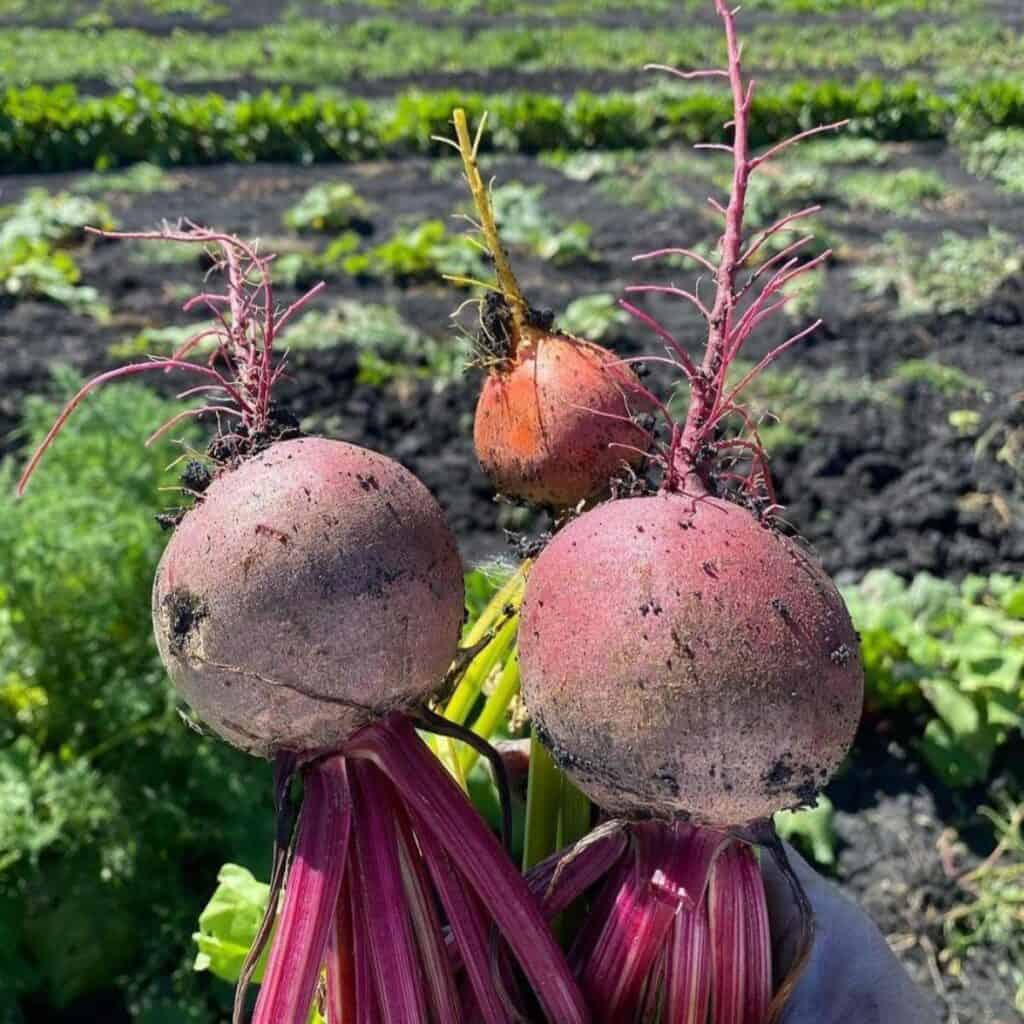

In warmer areas, beets can even be grown through the winter. They prefer fertile, well-draining soil and need plenty of water, especially as they grow. This makes them a great option for a fall garden.
#8 – Arugula
Arugula is a popular leafy green known for its peppery flavor. It grows quickly and is ideal for fall planting. This cool-season crop thrives in moderate temperatures and can be sown in late summer to early fall.
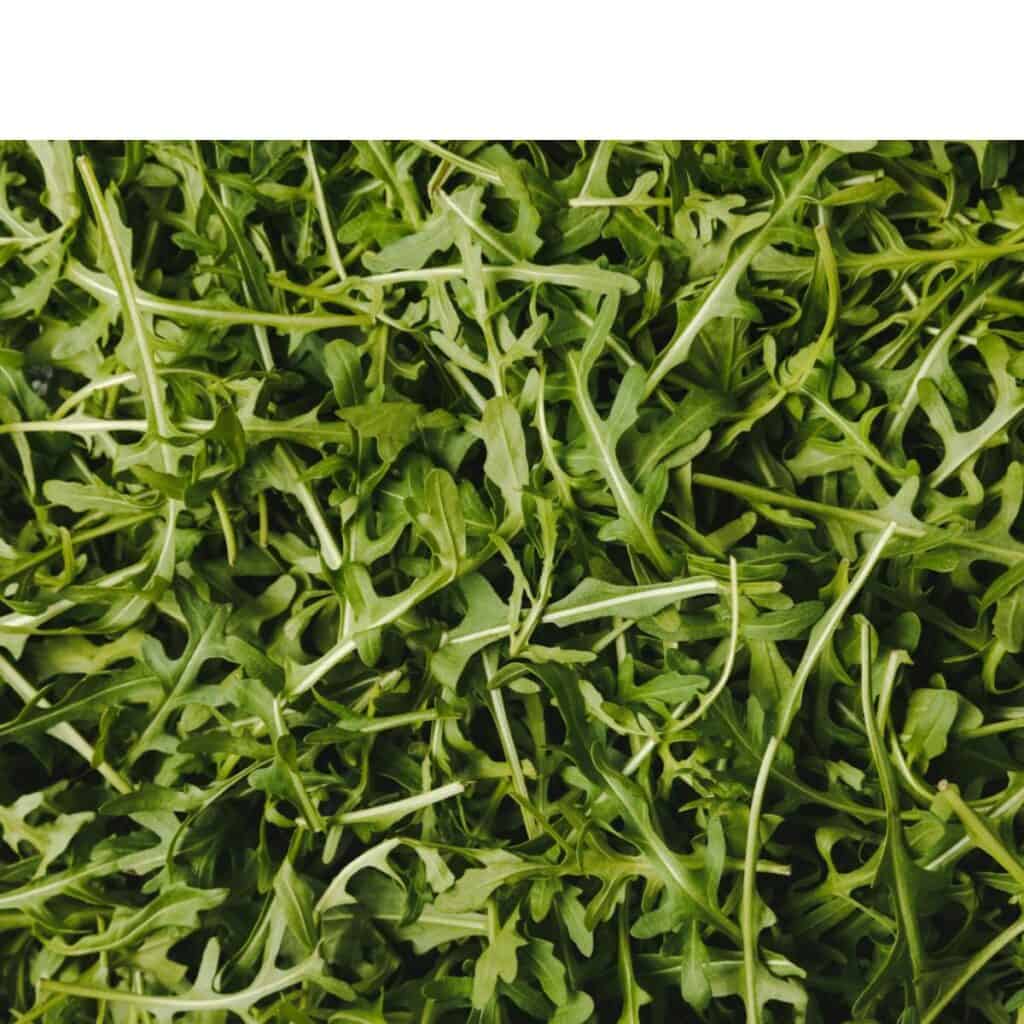

They can be planted with a spacing of about 12 to 18 inches apart.
Arugula typically matures in about 20 to 50 days, making it a fast addition to any garden.
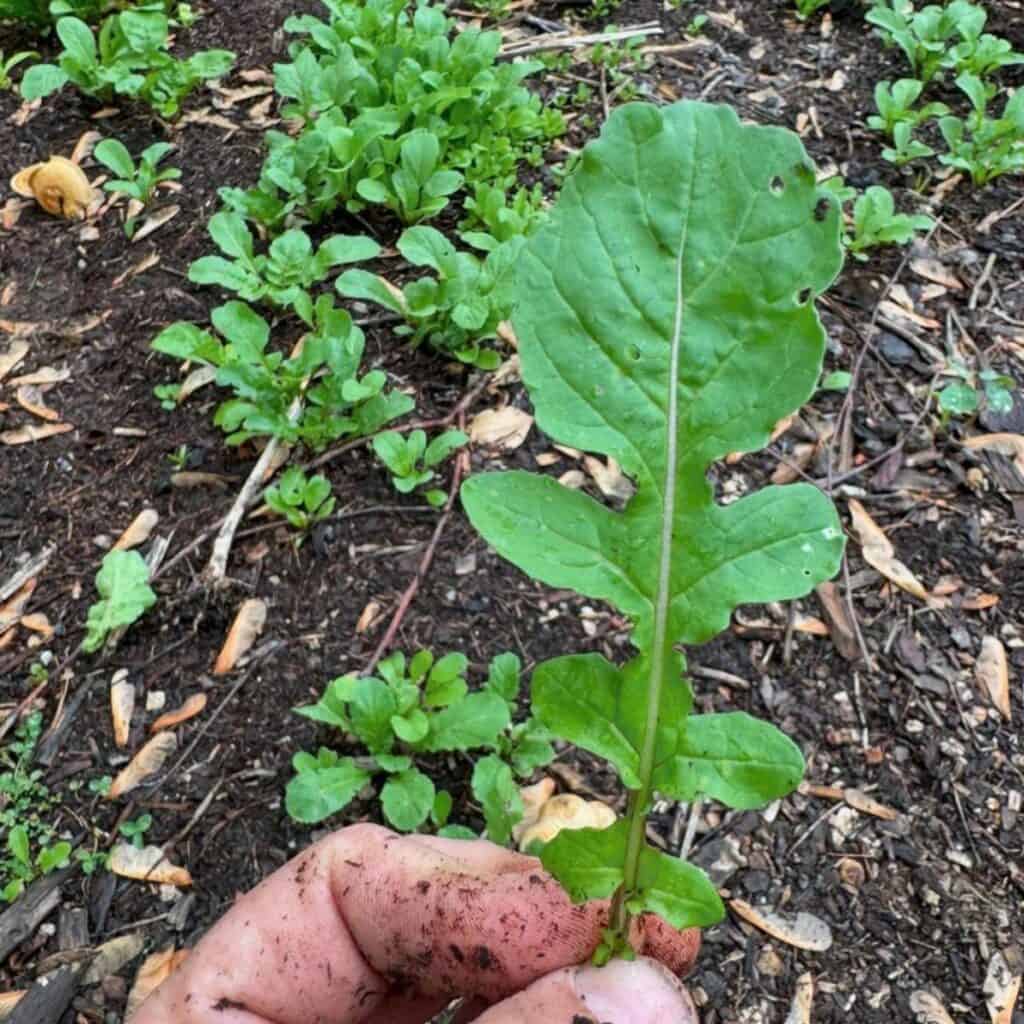

It can tolerate light frost, which can be harvested well into the fall. Gardeners often use it in salads, pizza toppings, or pasta dishes for added zest.
With its easy growth and quick turnaround, arugula is an excellent choice for those looking to enjoy fresh greens in the cooler months.
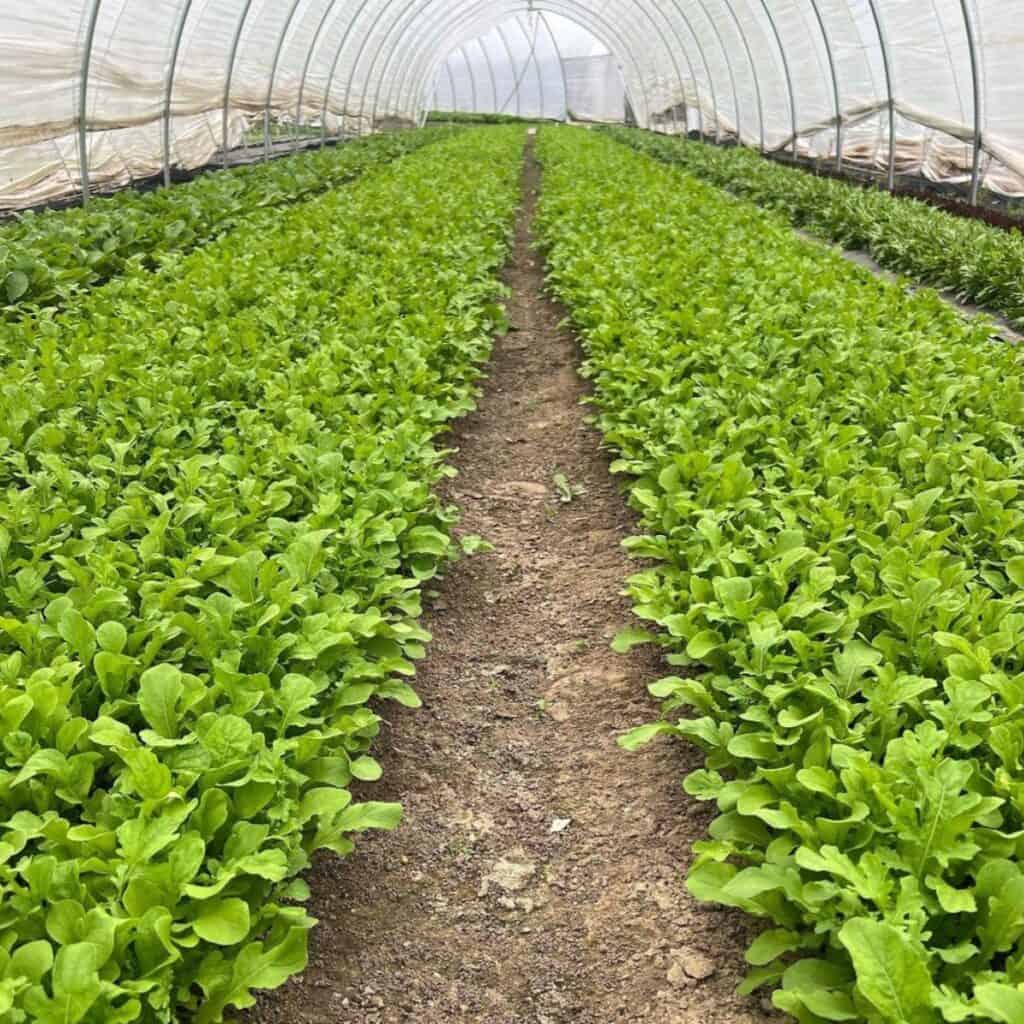

#9 – Mustard Greens
Mustard greens are a versatile and nutritious addition to any garden. They thrive in cooler temperatures, making August a great time to plant them for a fall harvest.
These greens can be direct-sown about ¼ inch deep. Gardeners should plant seeds close together for baby greens or space them out for larger plants.
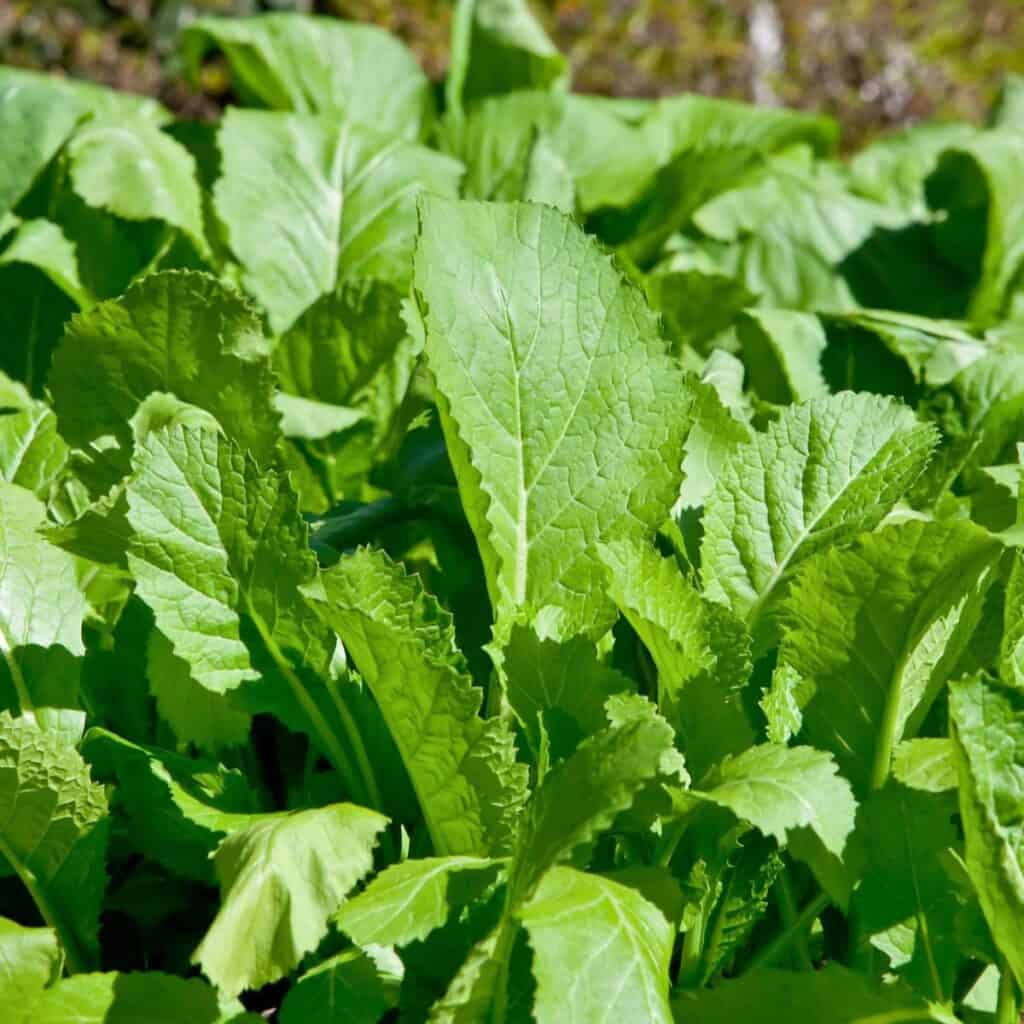

Mustard greens come in various varieties, each with unique flavors. Their taste can be spicier in warm weather, but they often become sweeter once exposed to cold.
They tolerate light frosts, which allows them to grow longer into the fall. Proper care can lead to a steady supply of fresh greens throughout the cooler months.
#10 – Turnips
Turnips are a nutritious root vegetable that thrives in cooler weather. They grow quickly and can be harvested 30 to 60 days after planting. This makes them a great option for a fall garden.
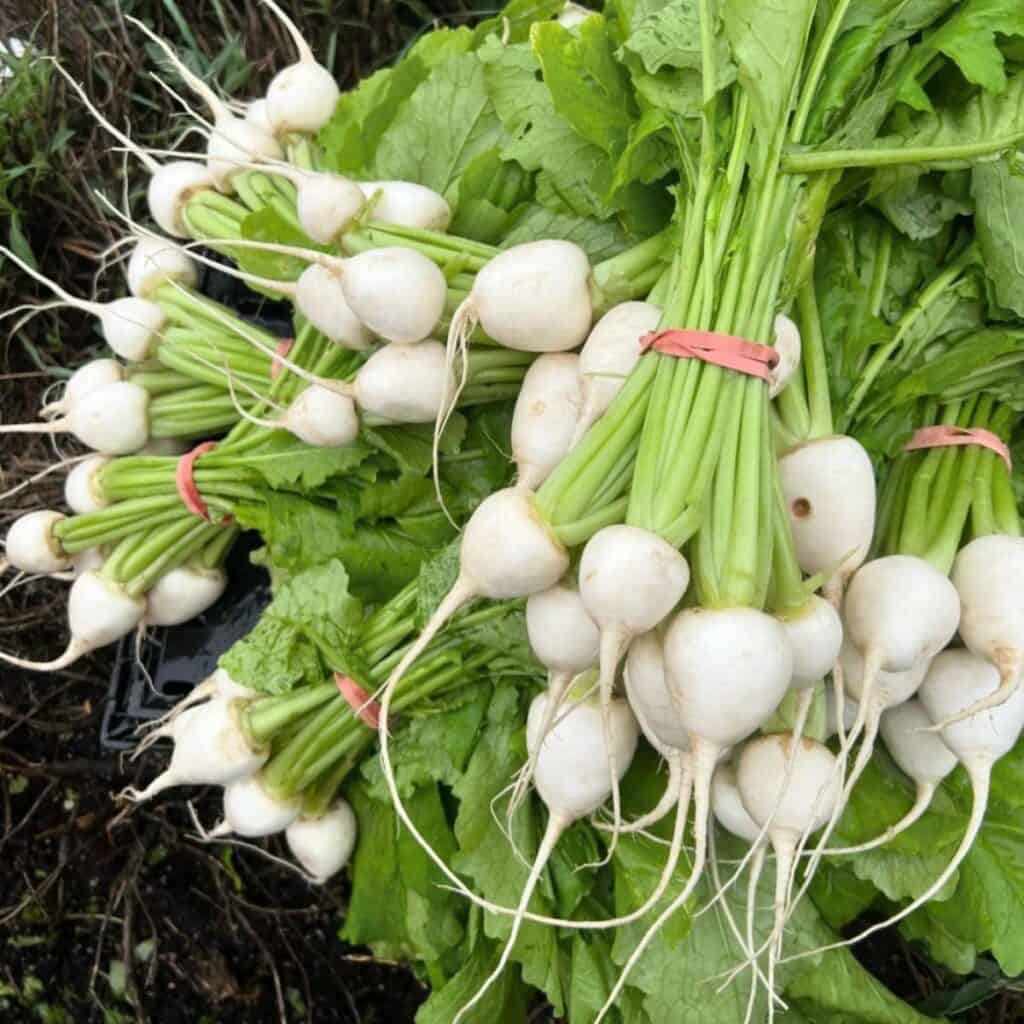

They are easy to grow in well-drained soil. Turnips prefer full sun but can tolerate some shade.
Plant seeds about 1 inch apart to give them space to develop.
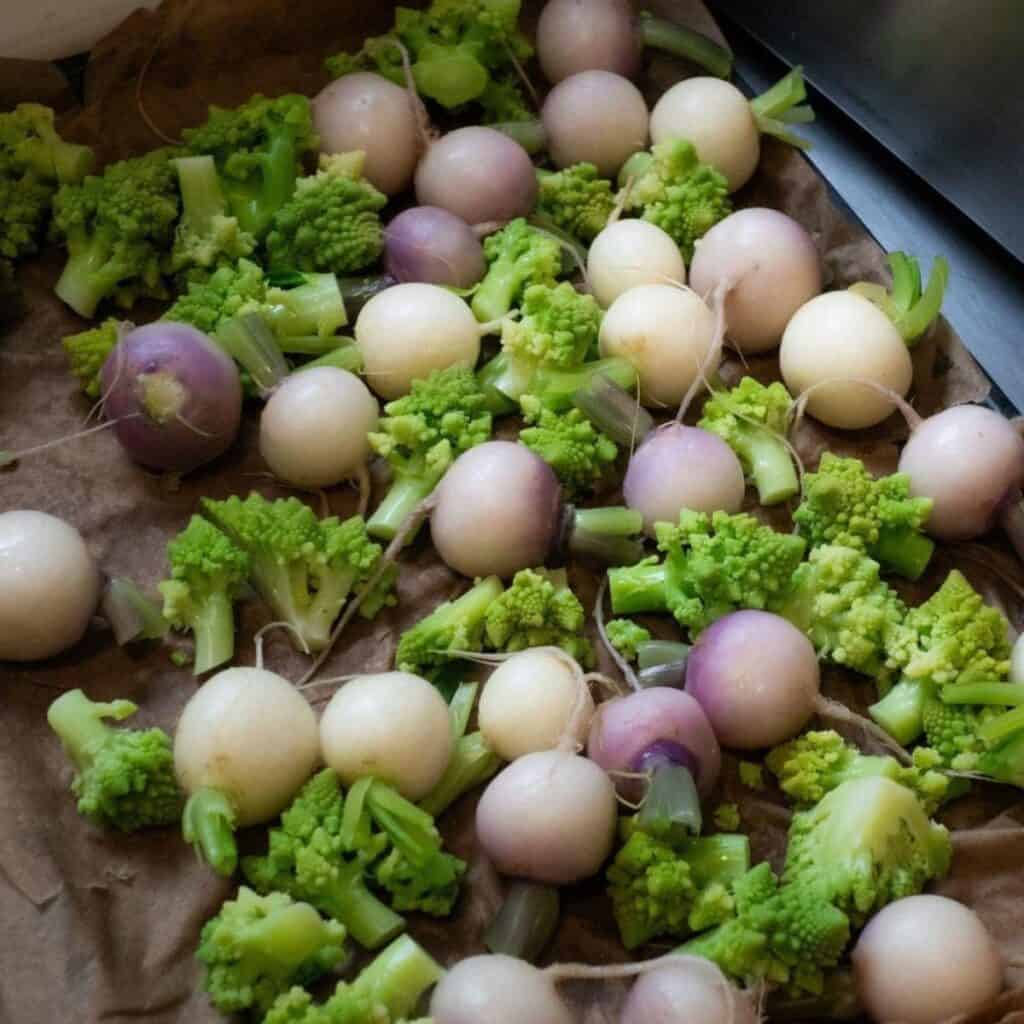

Turnips are versatile in the kitchen. They can be roasted, mashed, or used in soups and stews. Both the roots and the greens are edible. This makes turnips a valuable addition to any fall harvest.
#11 – Broccoli
Broccoli is a cool-season vegetable that thrives in the fall. It can be planted in August for a successful harvest. This vegetable prefers fertile, well-draining soil and full sun.
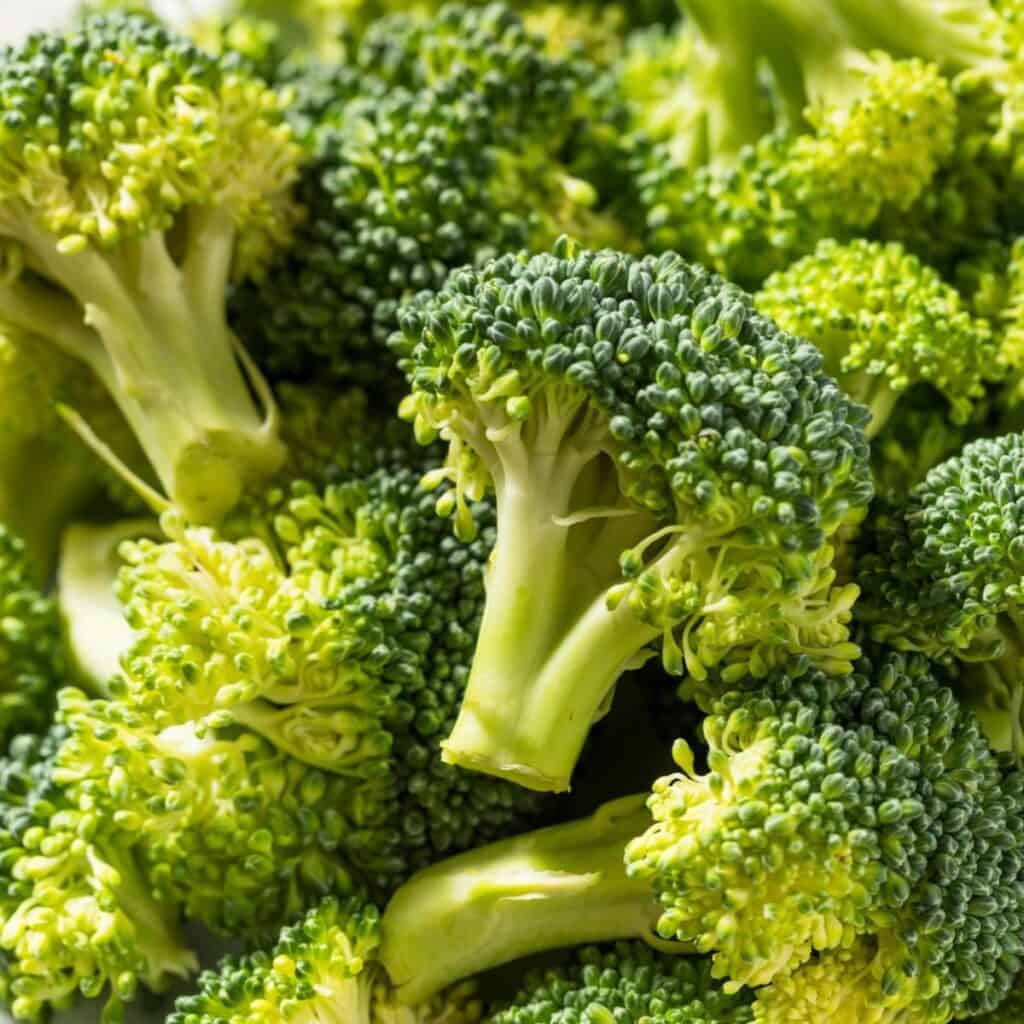

When you plant broccoli, it’s important to start the seeds inside or move young plants outside based on when the last frost is expected in your area.
Typically, broccoli needs around 70 to 100 days to mature, depending on the variety.
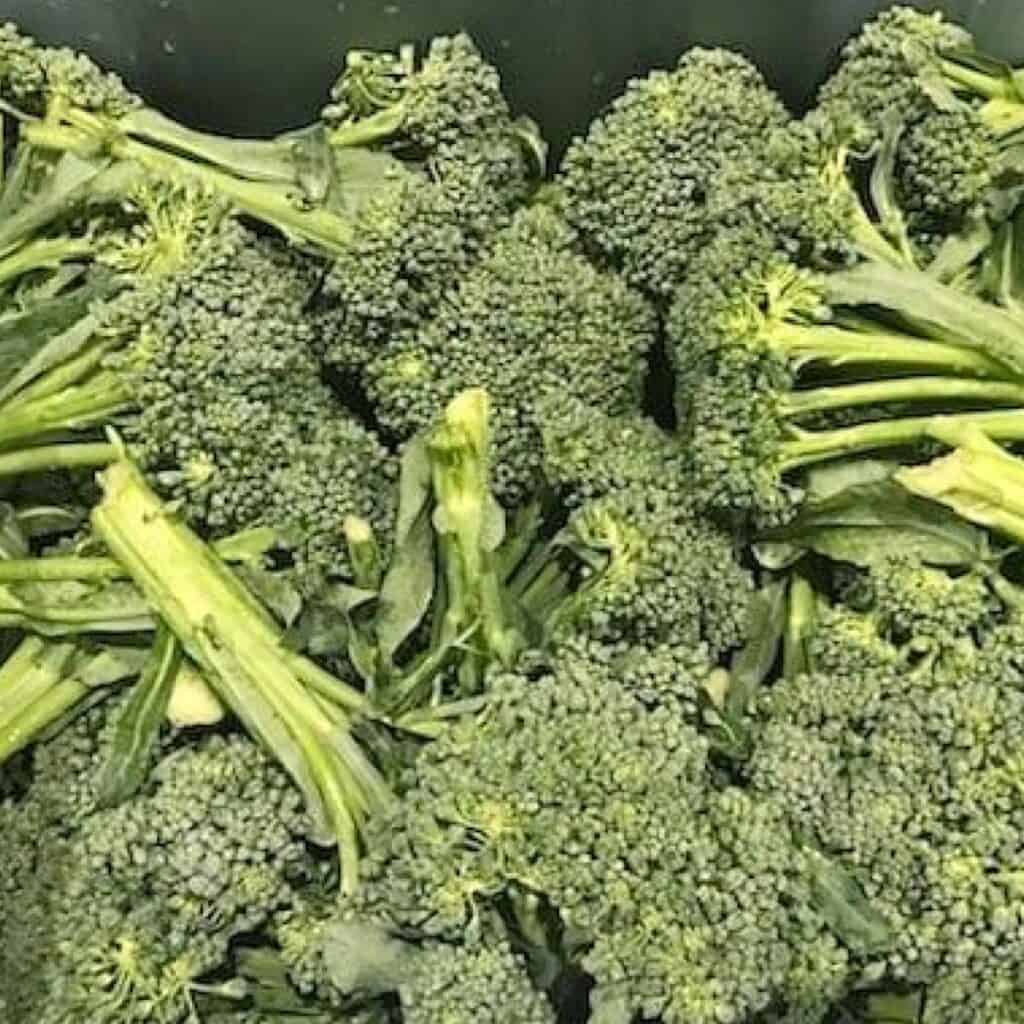

Growing broccoli is great because it’s healthy and can be cooked in many different ways, like steaming, roasting, or eating raw in salads.
Proper care includes regular watering and ensuring the plants are spaced adequately. They should be about 18 inches away from each other to grow properly.
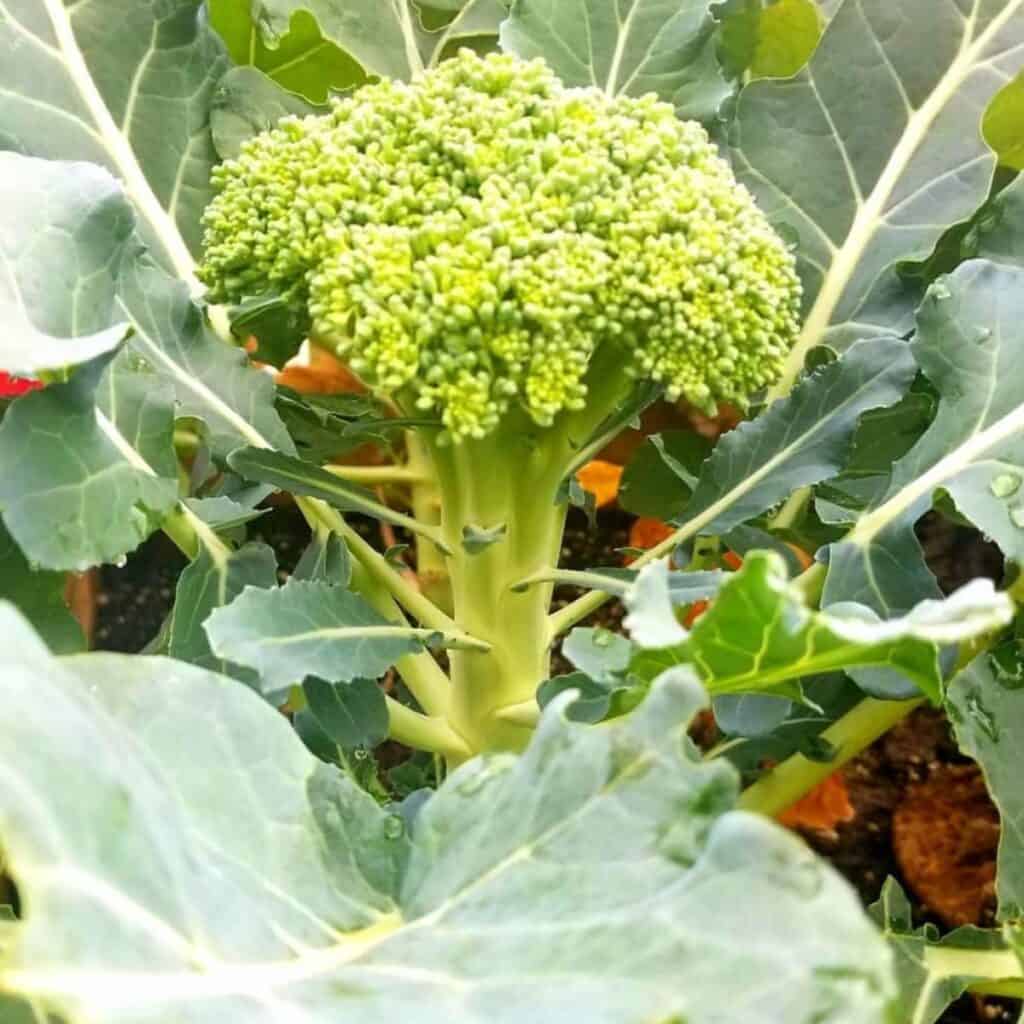

For colder climates, broccoli is known for its cold hardiness, making it a great option for fall gardens.
#12 – Kohlrabi
Kohlrabi is a unique vegetable known for its round shape and crisp texture. It belongs to the Brassica family, which includes cabbage and broccoli.
This vegetable thrives in cooler weather, making August a good time to plant for a fall harvest.
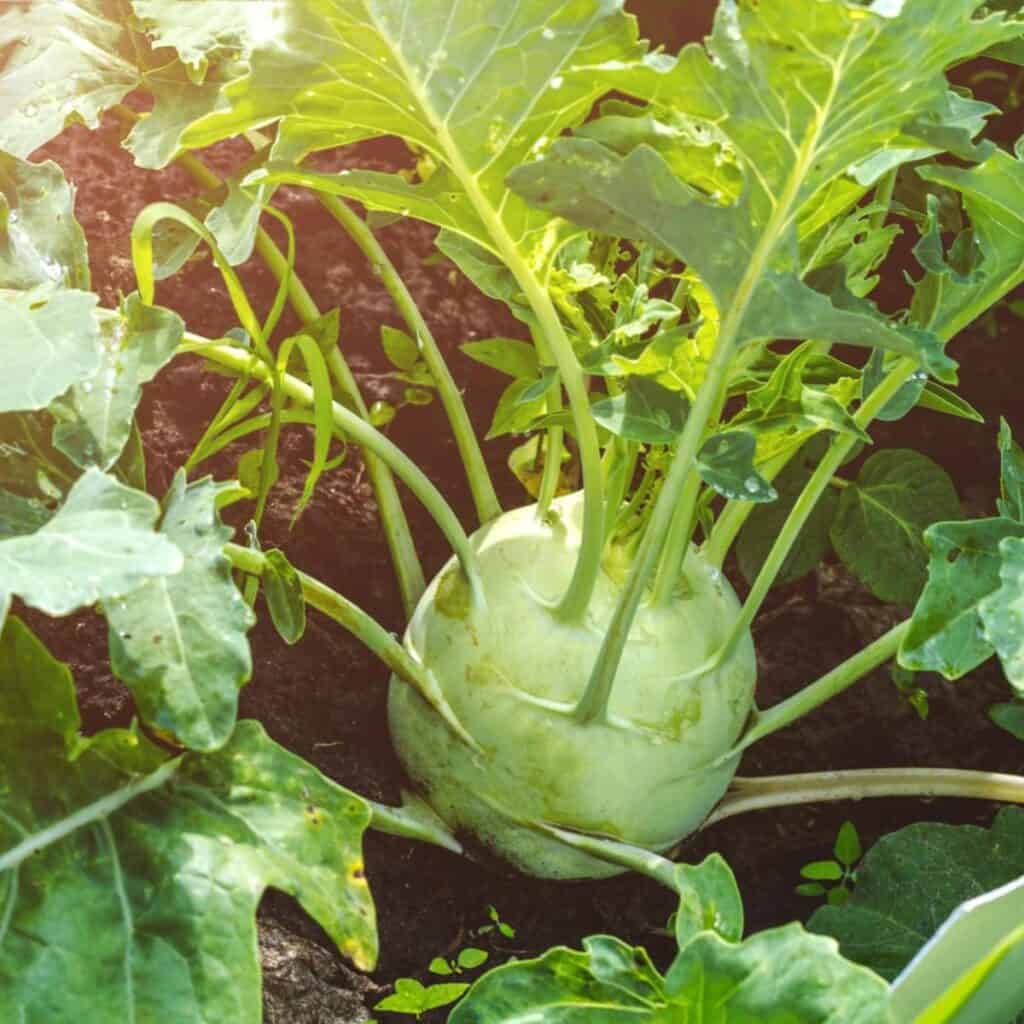

It prefers temperatures between 40℉ and 75℉. Gardeners should use rich soil to help it grow well and ensure it gets plenty of sunlight.
They need to keep the soil consistently moist but not waterlogged.
Most kohlrabi varieties take around 45 to 60 days to mature. Young kohlrabi are tender and sweet, while older ones can become woody.
The entire plant is edible, including the leaves, which are rich in nutrients.
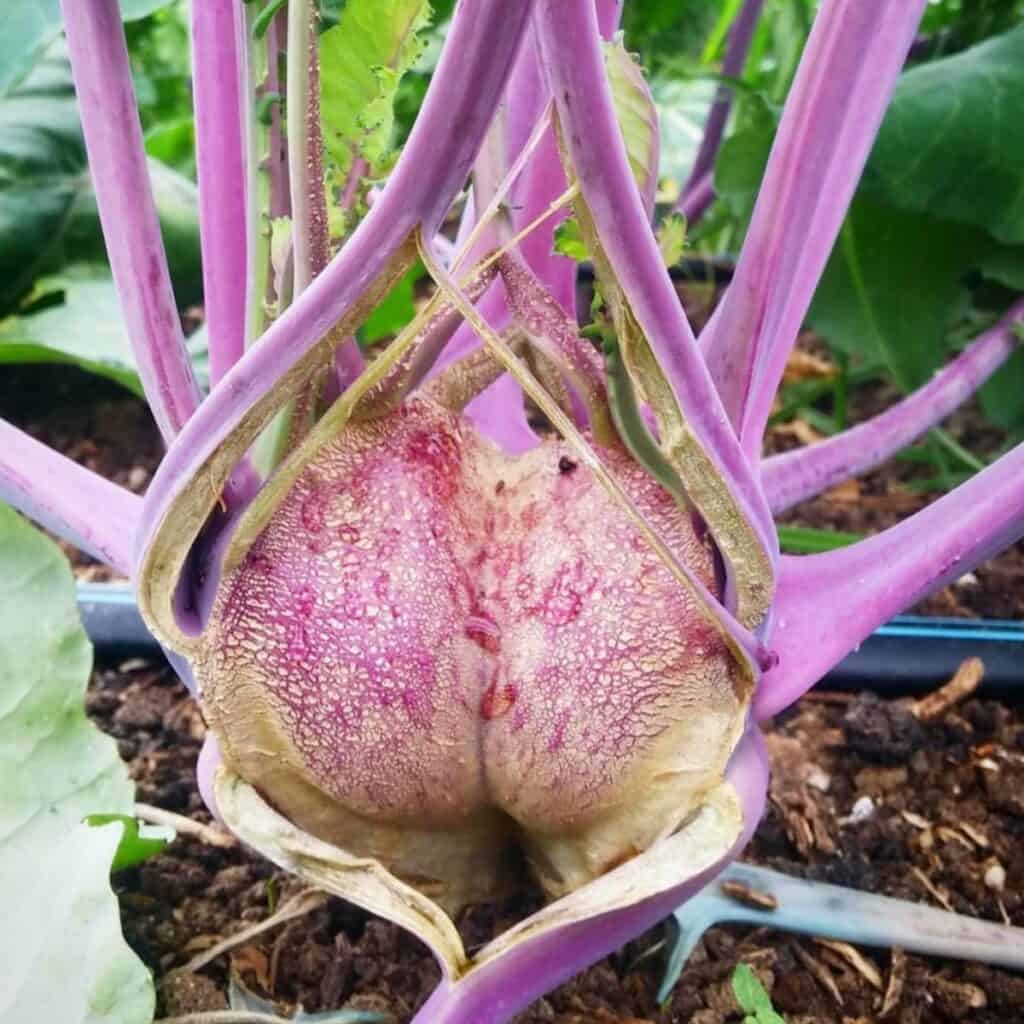

Adding kohlrabi to salads and stir-fries can give them a crunchy texture. It’s also a great source of vitamins C and B6, potassium, and fiber.
#13 – Cauliflower
Cauliflower is a versatile vegetable that thrives in cool conditions. It can be planted in August for a fall harvest.
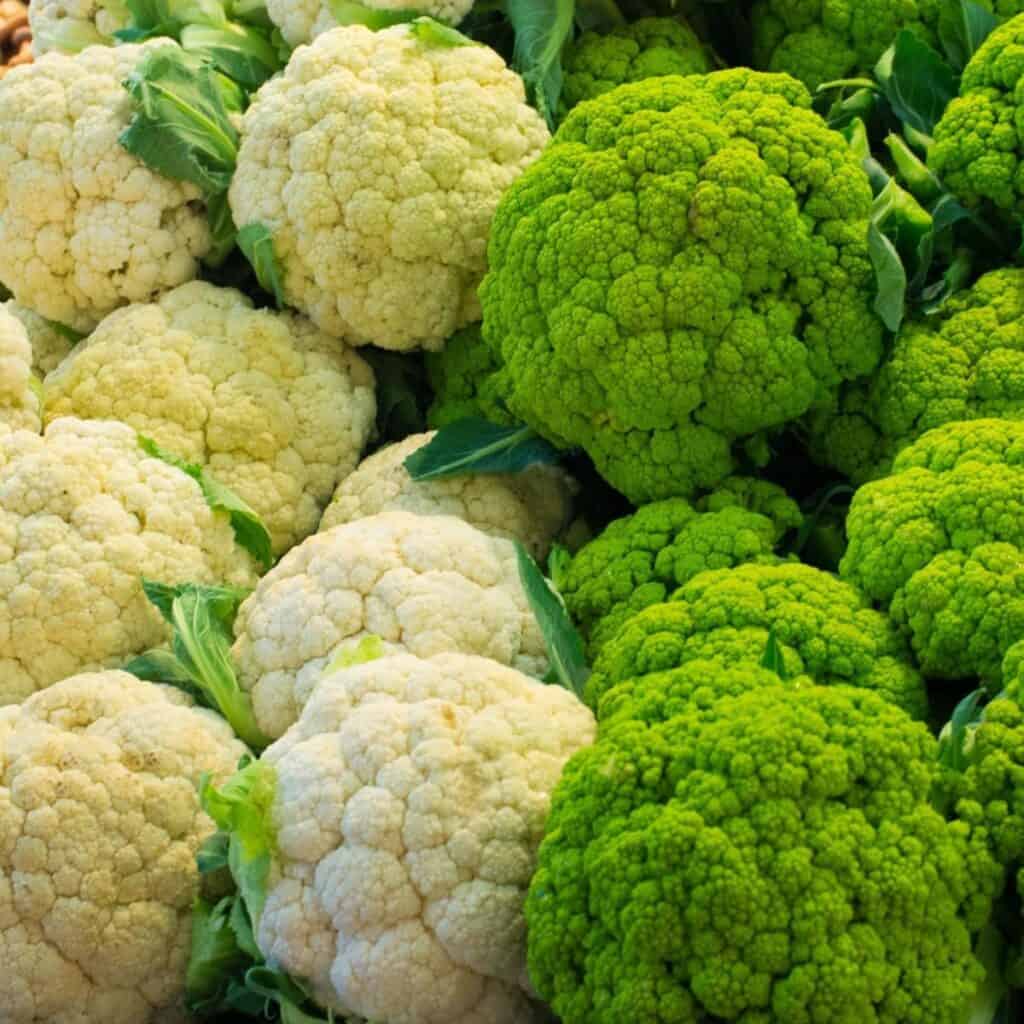

It needs full sunlight for at least six hours a day to grow big heads. Adequate light is essential for forming large heads.
Cauliflower can be directly seeded or started indoors. When planting, put the seeds about half an inch deep. For the best growth, each cauliflower plant needs 24 inches of space in the row and 30 inches between rows.
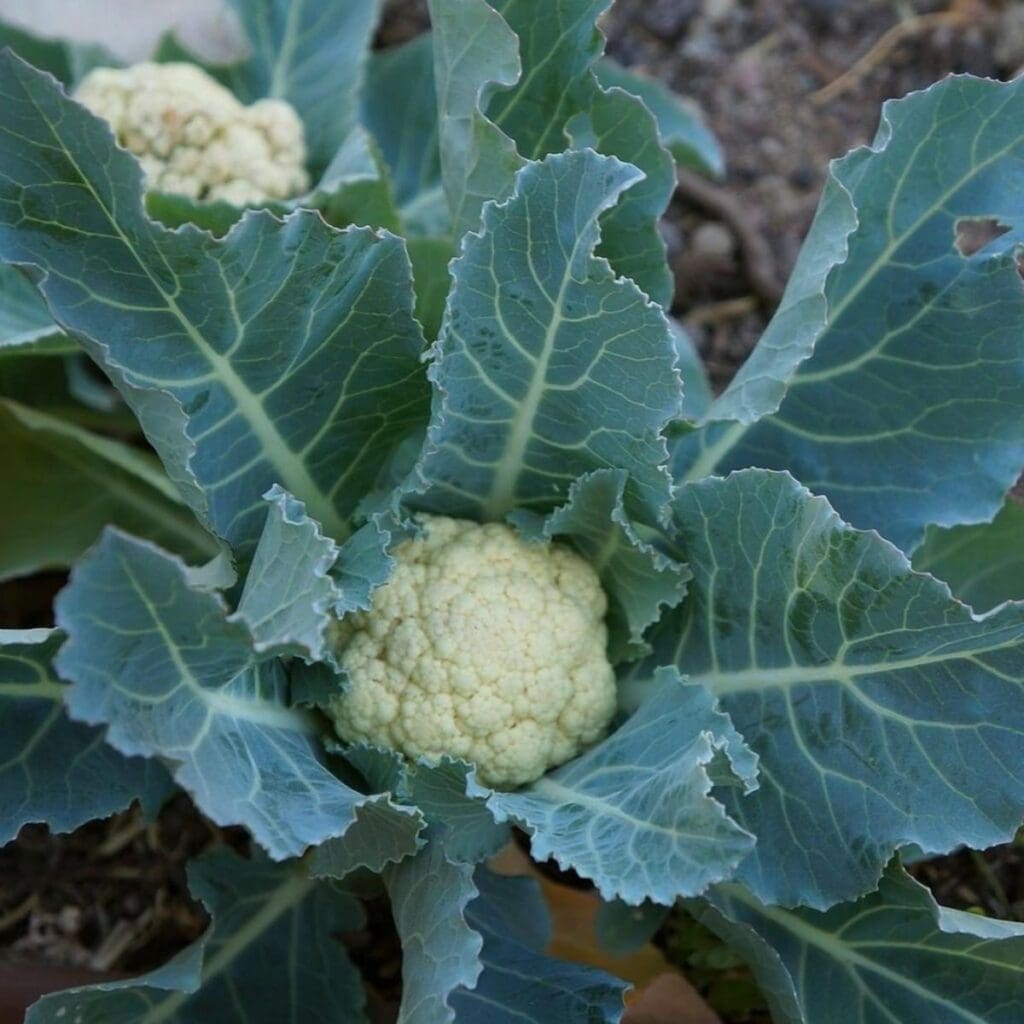

Cauliflower plants can be harmed by extreme heat and frost, so be sure to protect them for a good harvest.
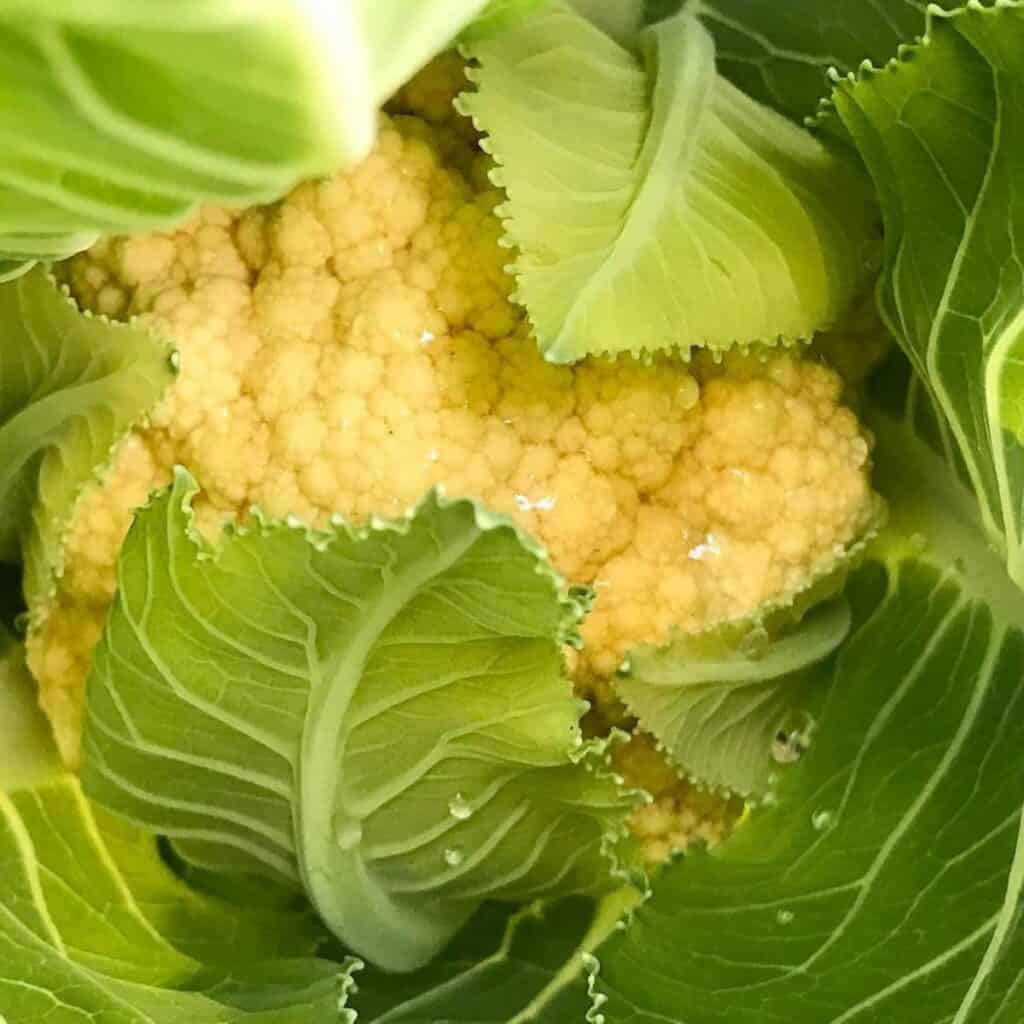

For tips on planting cauliflower, check out this guide.
#14 – Collard Greens
Collard greens are a nutritious vegetable that thrive in cooler weather. They grow well when planted in August for a fall harvest.
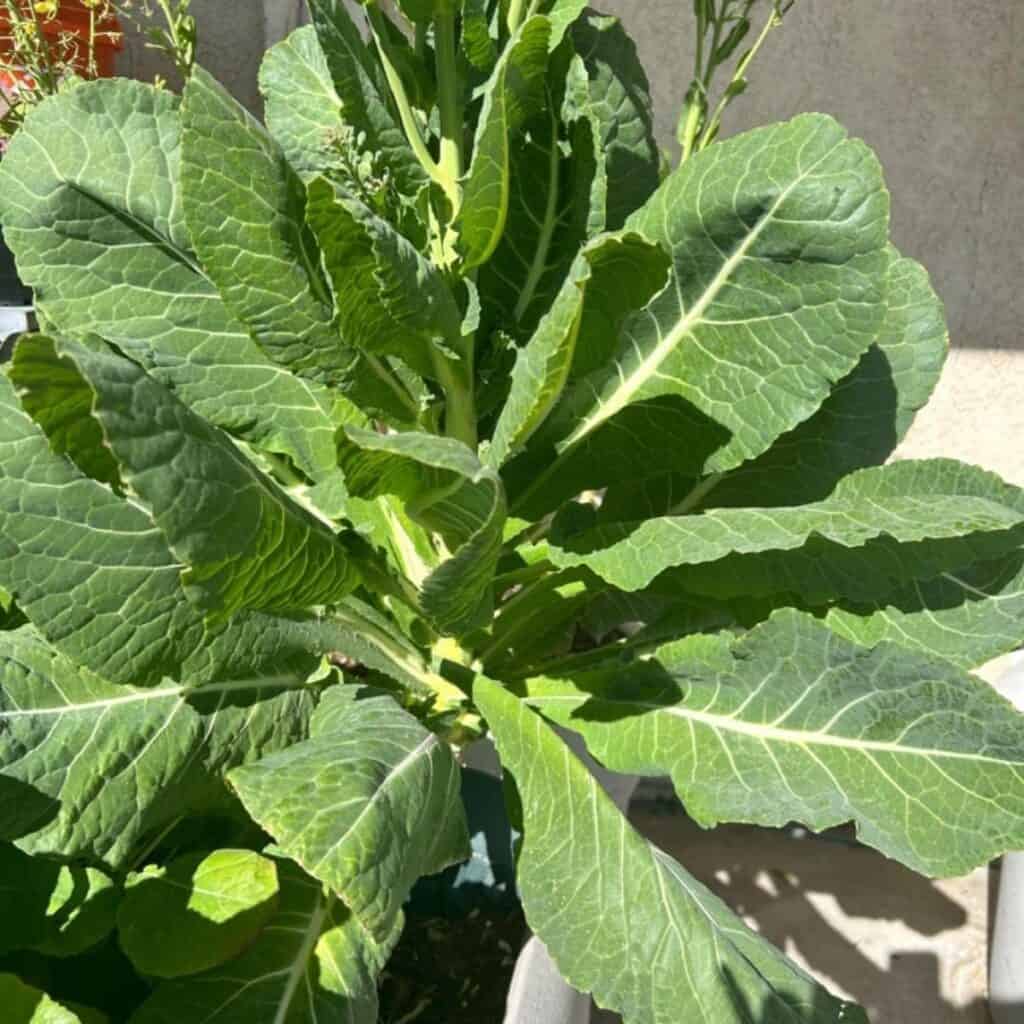

These plants prefer fertile, well-draining soil with a pH between 6.0 and 7.0. Adding compost can improve soil quality and help the plants grow strong.
Collards need at least 4 to 5 hours of sunlight each day. Space them 12-18 inches apart in rows that are 18-36 inches apart to allow for their large size.
Harvesting can begin 60 to 80 days after planting. It is best to pick the outer leaves first, which encourages continued growth.


Collards are a versatile vegetable that can be used in many dishes.
#15 – Brussels Sprouts
Brussels sprouts are a nutritious vegetable that thrives in cooler weather. They are planted mid-to-late summer for a late fall or early winter harvest.
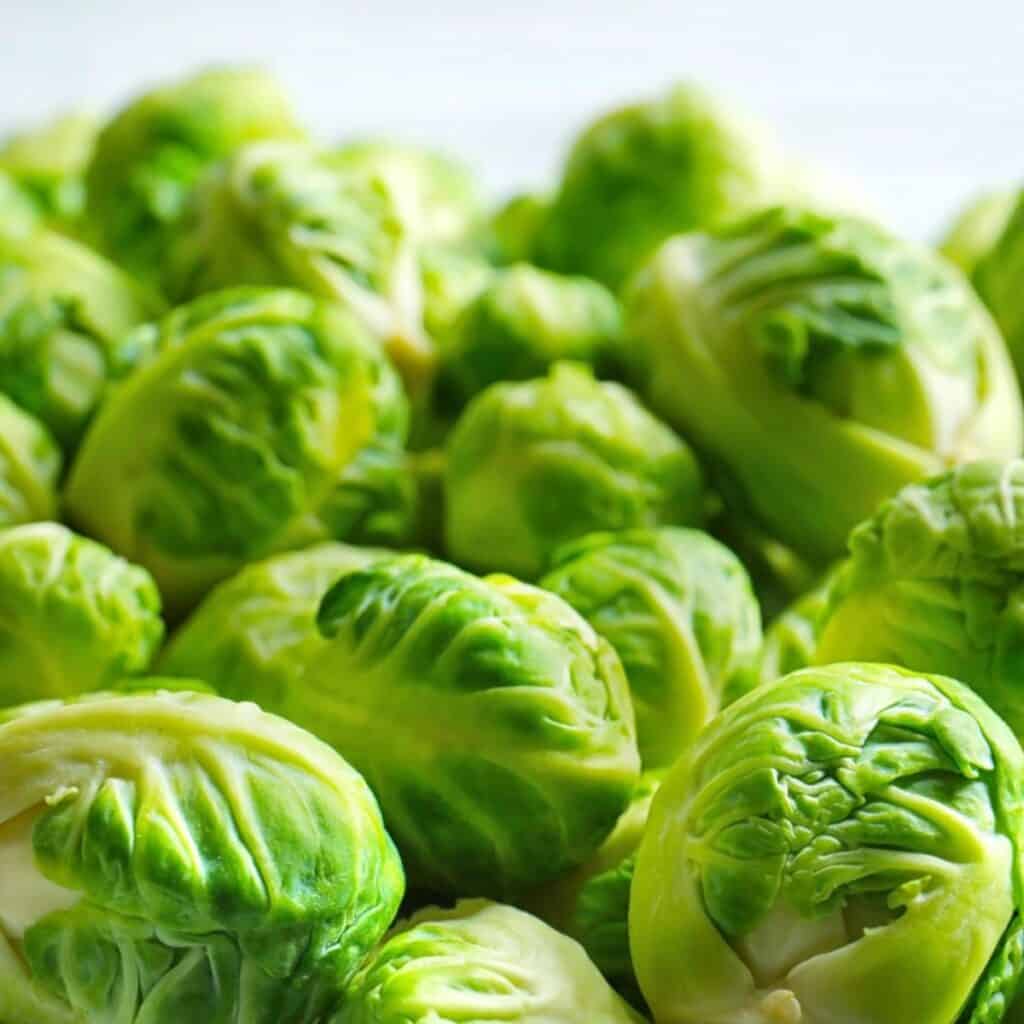

These plants need fertile, well-draining soil with a pH between 6.0 and 7.0. They grow best in full sun but can tolerate some shade.
To harvest Brussels sprouts, pick the sprouts that reach about 1 inch in diameter from the bottom of the stalk.
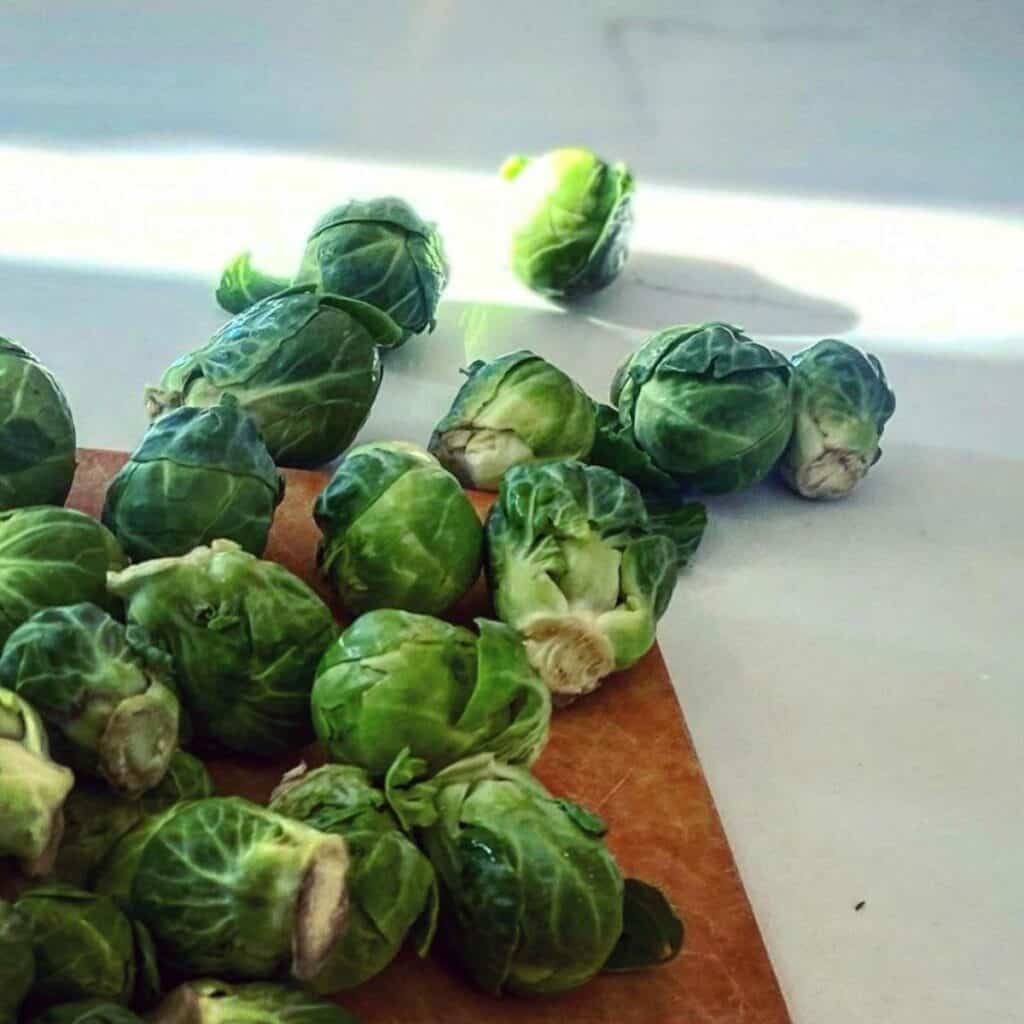

The whole stalk can be pulled up after a frost for longer storage, with leaves removed first.
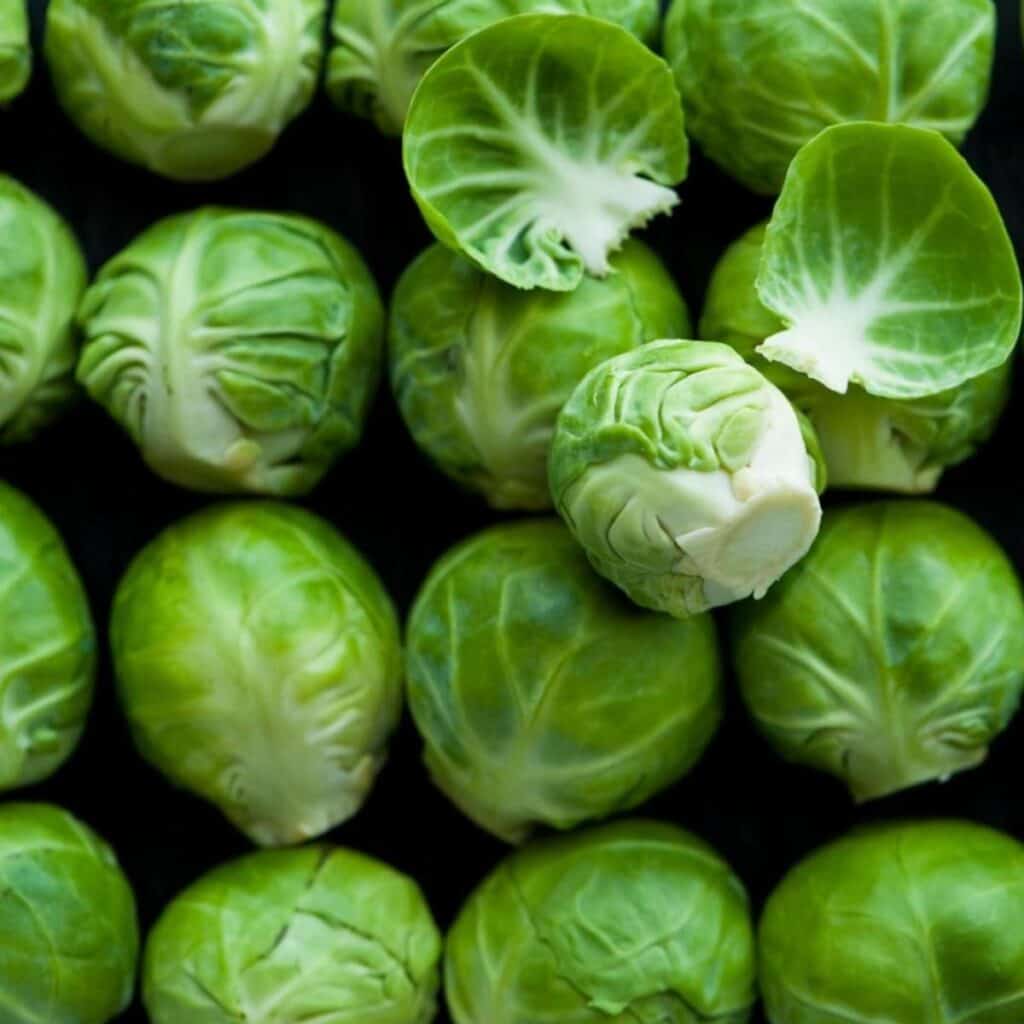

Brussels sprouts are versatile and can be roasted, steamed, or used in various dishes. They provide a rich source of vitamins and minerals, making them a healthy addition to any meal.
#16 – Parsnips
Parsnips are a great choice for a fall harvest. They are planted in late summer and can be harvested after the first frost. Cold weather makes them sweeter.
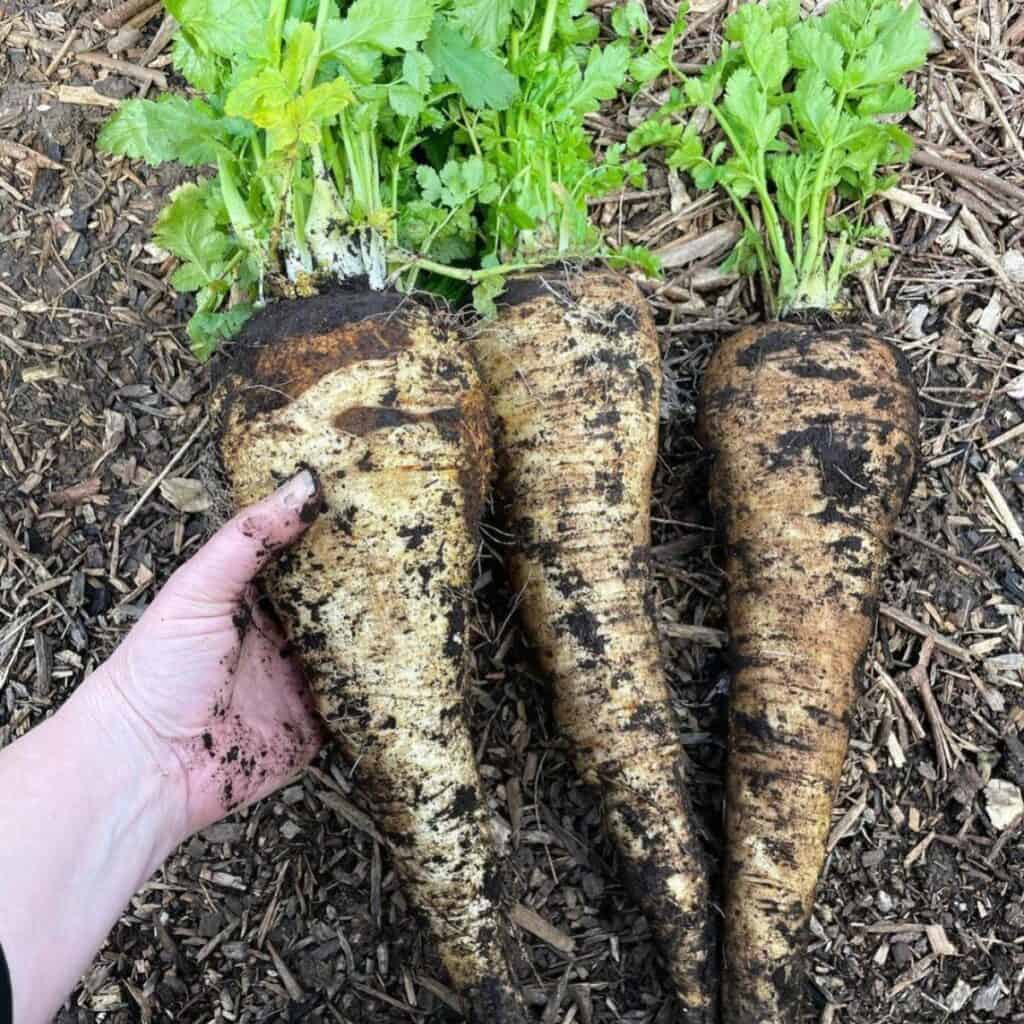

To grow parsnips, plant seeds about half an inch deep in loose, well-aerated soil.
Spacing them 1 to 2 inches apart helps with growth. For best results, use fresh seeds, as older ones often have lower germination rates.
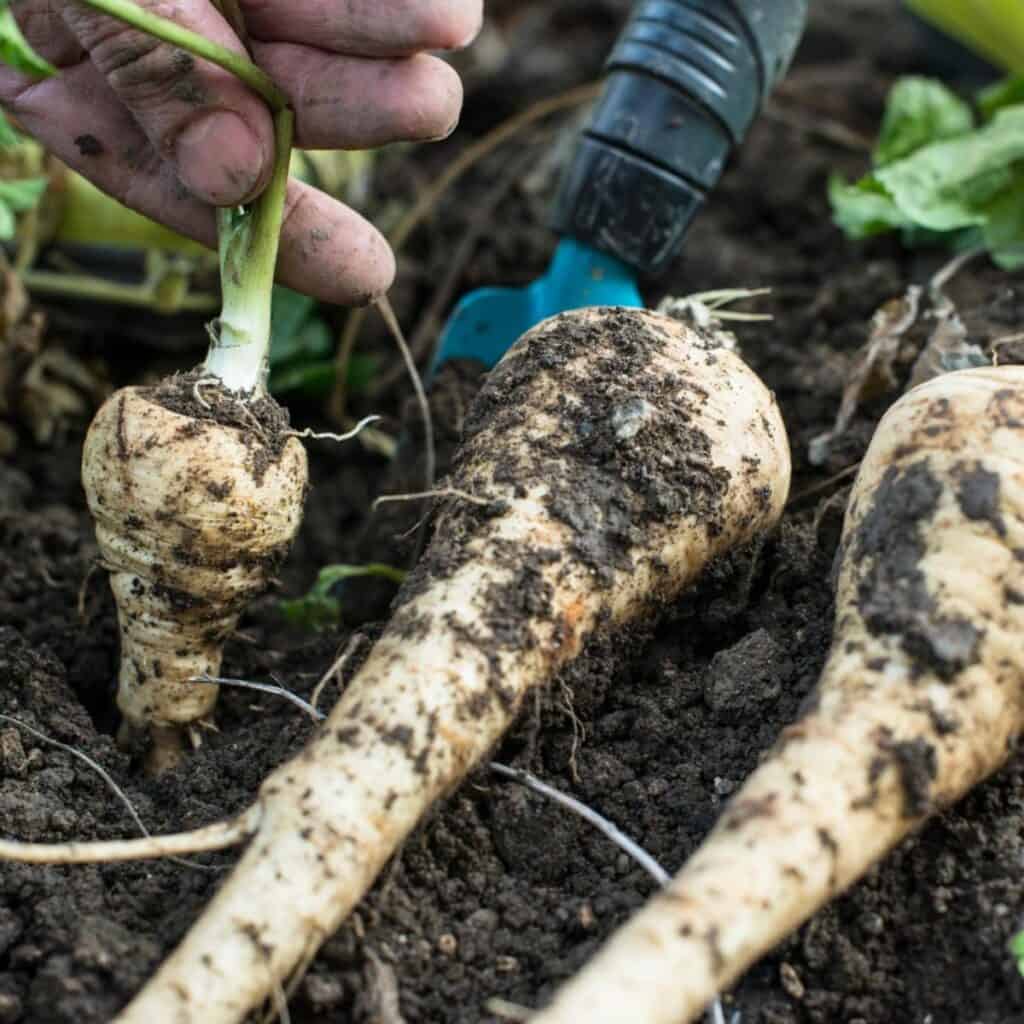

Parsnips prefer full sunlight and can thrive in average to rich soil. Mixing compost into the top layer can improve the soil quality.
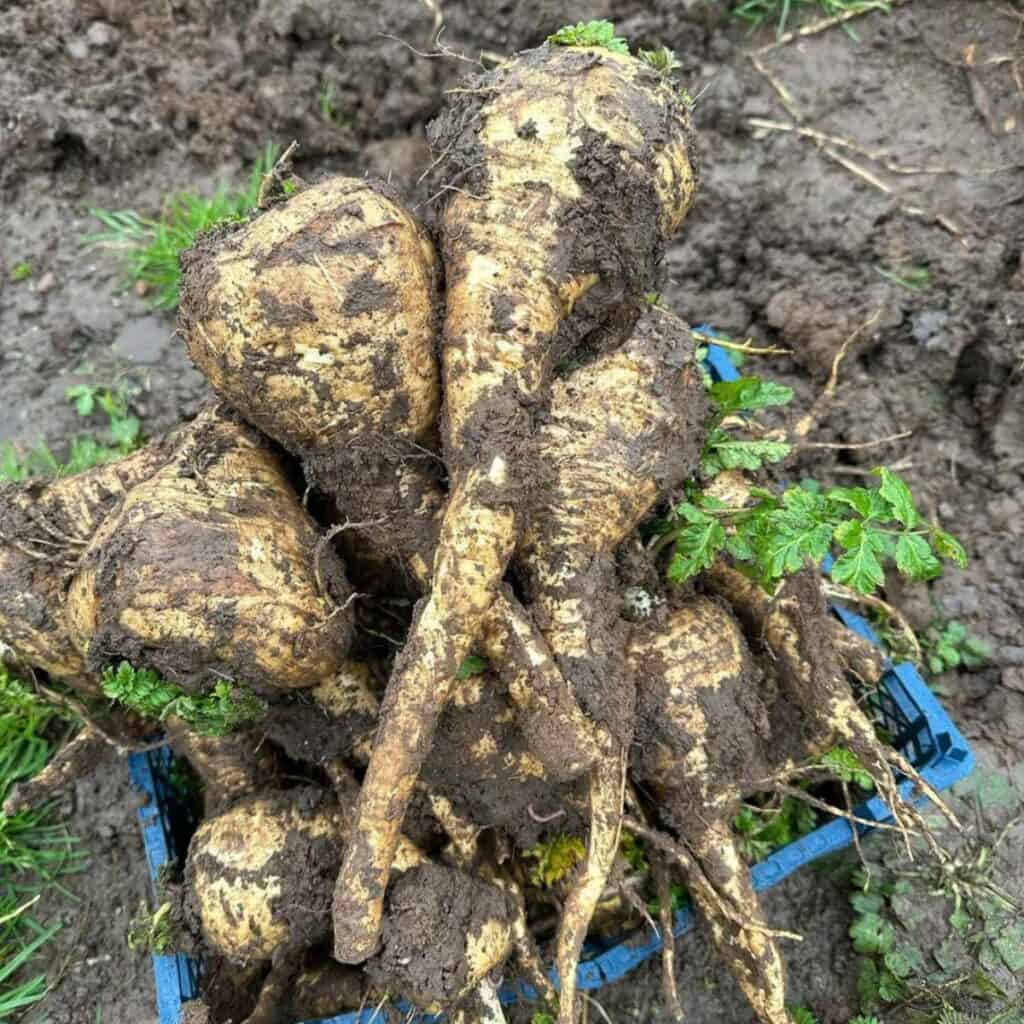

These vegetables take time to grow, so patience is key.
Once harvested, parsnips can be used in many dishes, including soups and stews. Their sweet, nutty flavor adds depth to meals.
#17 – Cabbage
Plant cabbage seeds or transplants 12 to 24 inches apart. This spacing allows for ample growth and airflow.
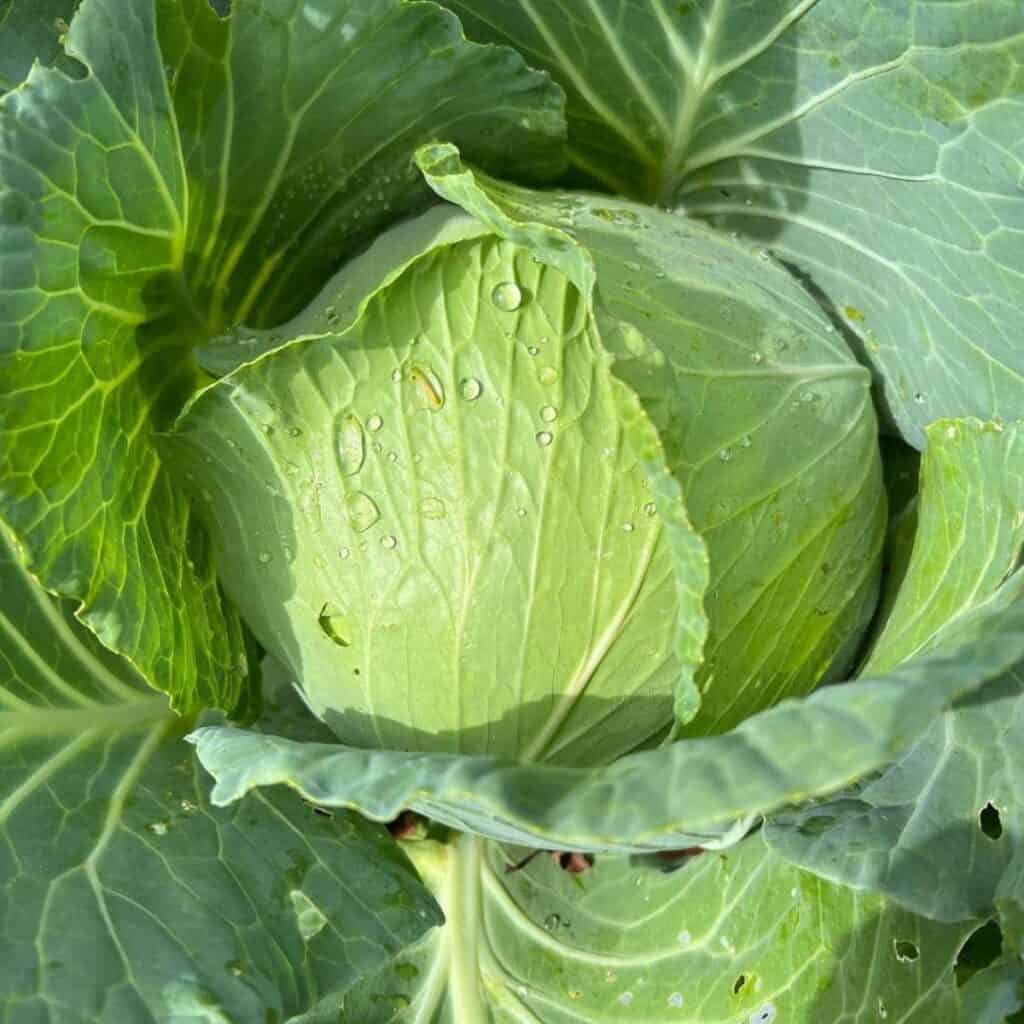

It typically takes about 70 to 90 days to reach maturity. Cabbage can withstand light frosts, making it a great choice for fall gardens.
There are many varieties of cabbage, including green, red, and savoy. Each variety offers unique flavors and textures for different recipes.
Cabbage is versatile in cooking and is suitable for salads, soups, and slaws. It is also a good source of vitamins C and K, providing nutritional benefits.
#18 – Cilantro
Cilantro is a popular herb known for its fresh, vibrant flavor. It thrives in cooler temperatures, making August a great time to plant it for a fall harvest.
This herb prefers well-drained soil and full sun. Watering regularly helps keep the plant healthy, but overwatering should be avoided.
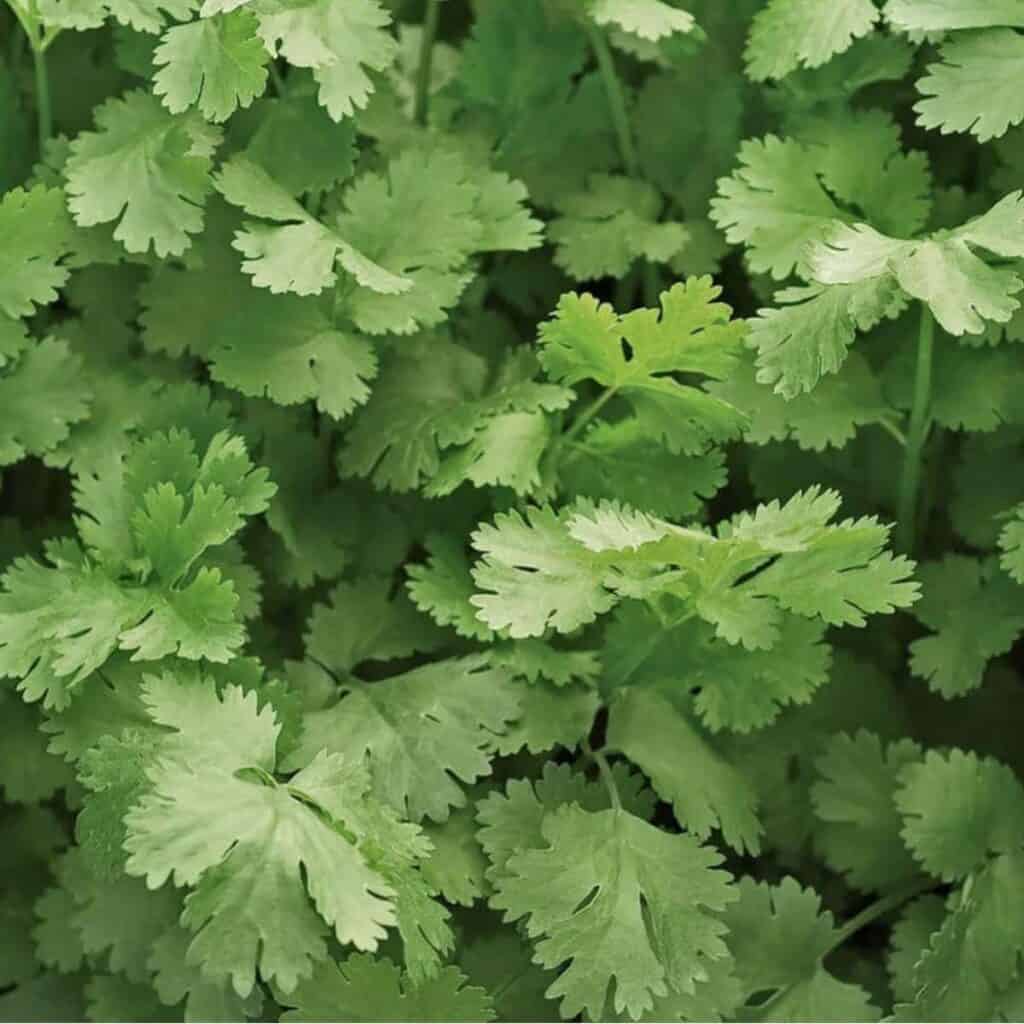

Cilantro can grow quickly, usually ready to harvest within three to four weeks. The leaves can be used fresh in salads, salsas, and many dishes.
It’s important to note that cilantro can bolt in hot weather, so planting it now can lead to better yields.
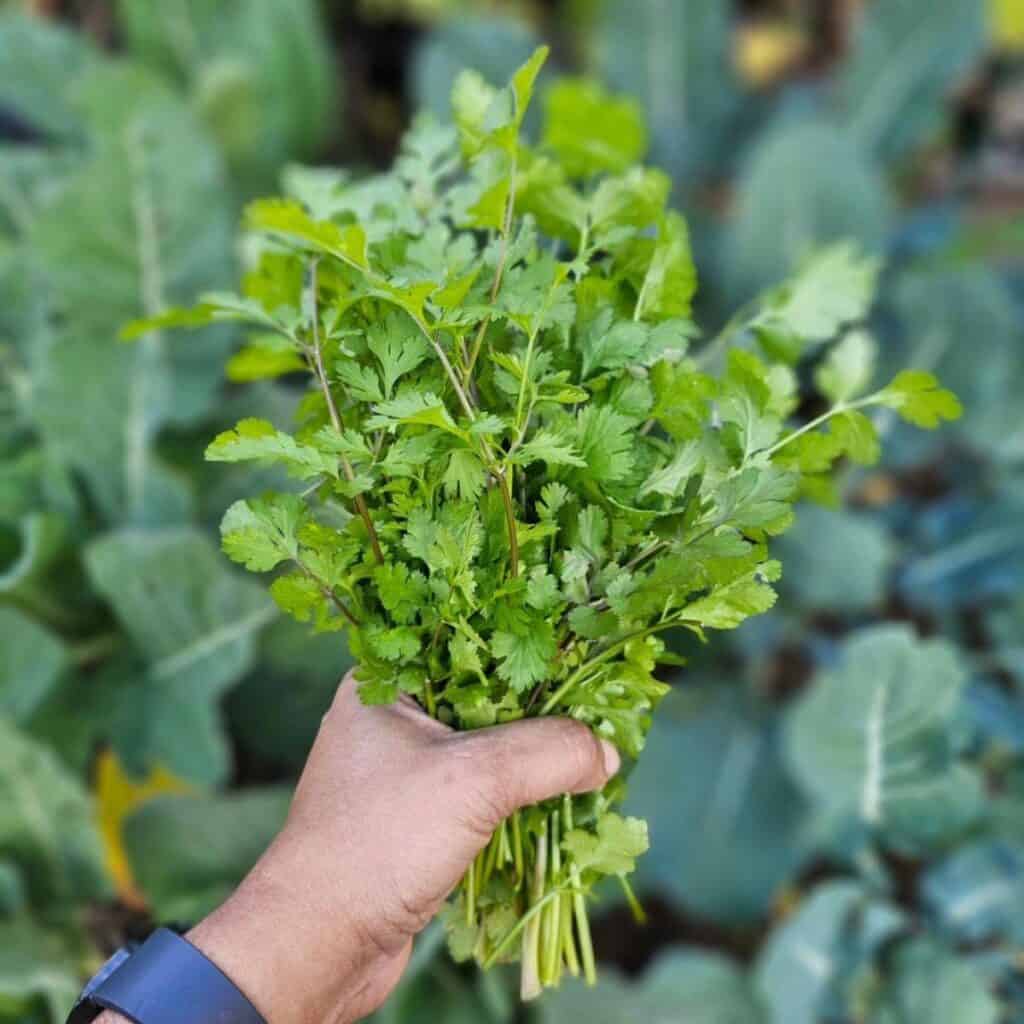

This makes August an ideal month to start growing cilantro for fall meals.
#19 – Bok Choy
Bok choy is a popular Asian leafy vegetable known for its crunchiness. It can be planted in late summer for a quick fall harvest.
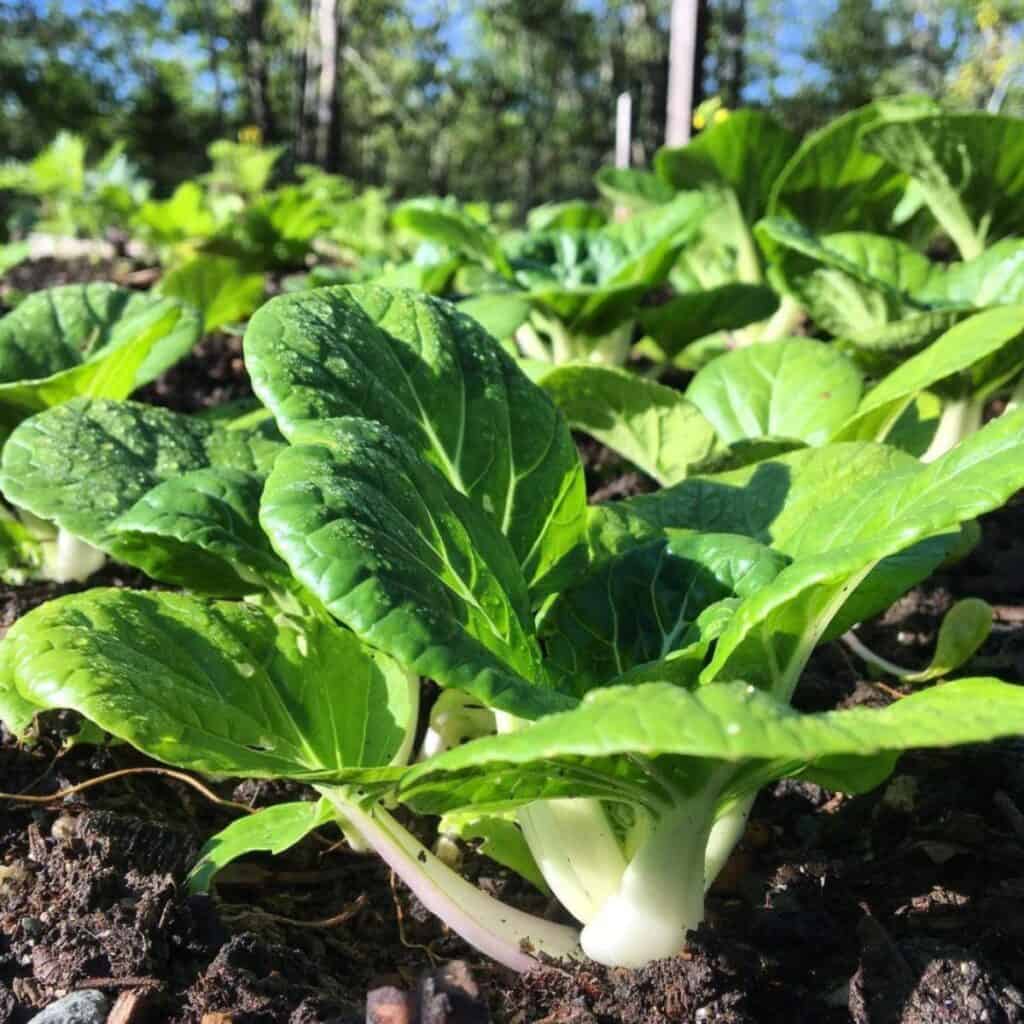

This vegetable grows well in cooler weather and can survive light frost, making it ideal for autumn gardens. Bok choy typically takes around 45 to 60 days to mature.
Seeds should be spaced 6 to 12 inches apart to allow for proper growth.
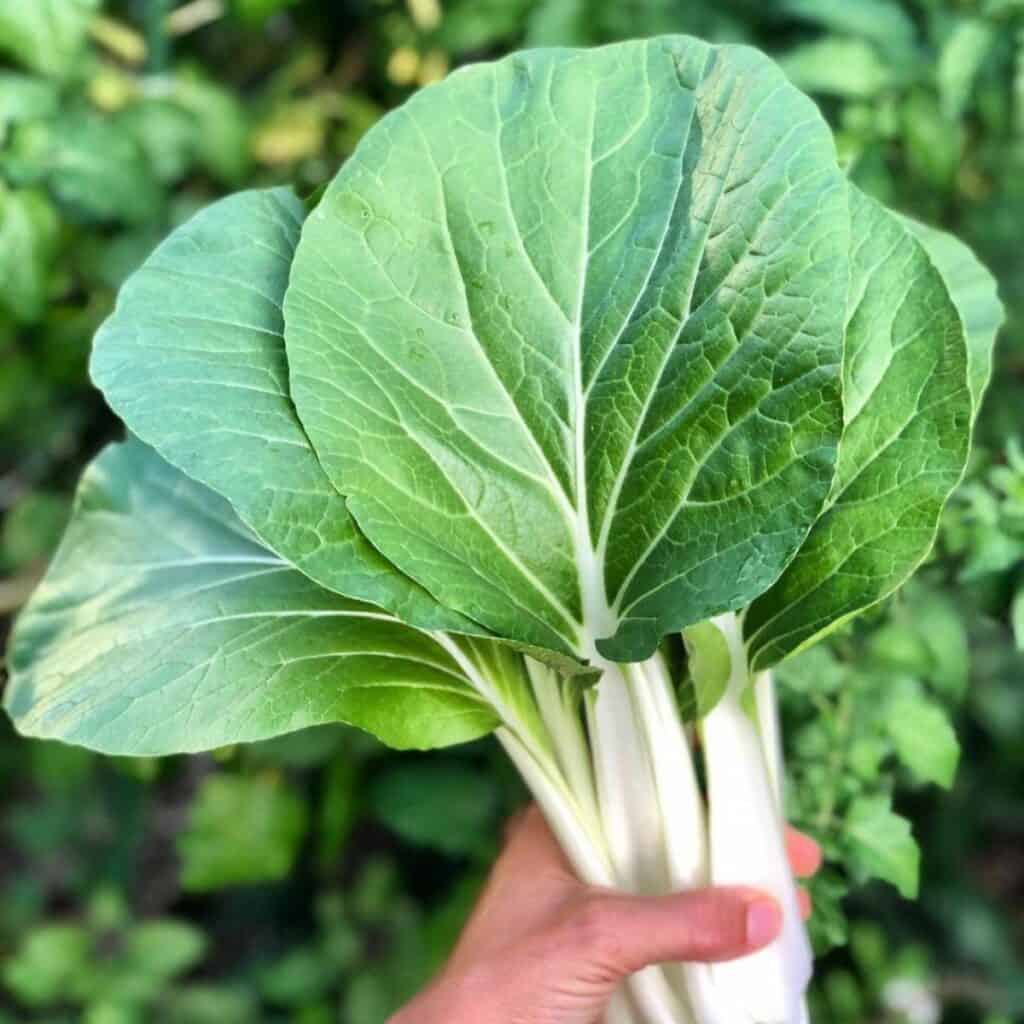

It thrives in full sun and prefers well-drained soil enriched with organic matter.
Bok choy is versatile in the kitchen. It can be used in salads, soups, and stir-fries. Its slightly peppery flavor adds a nice touch to various dishes.


For gardeners seeking a rewarding and nutritious crop, bok choy is an excellent choice for a fall garden.
#20 – Scallions
Scallions, or green onions, are a great choice for an August planting. They thrive in cooler weather, making them ideal for fall harvests.
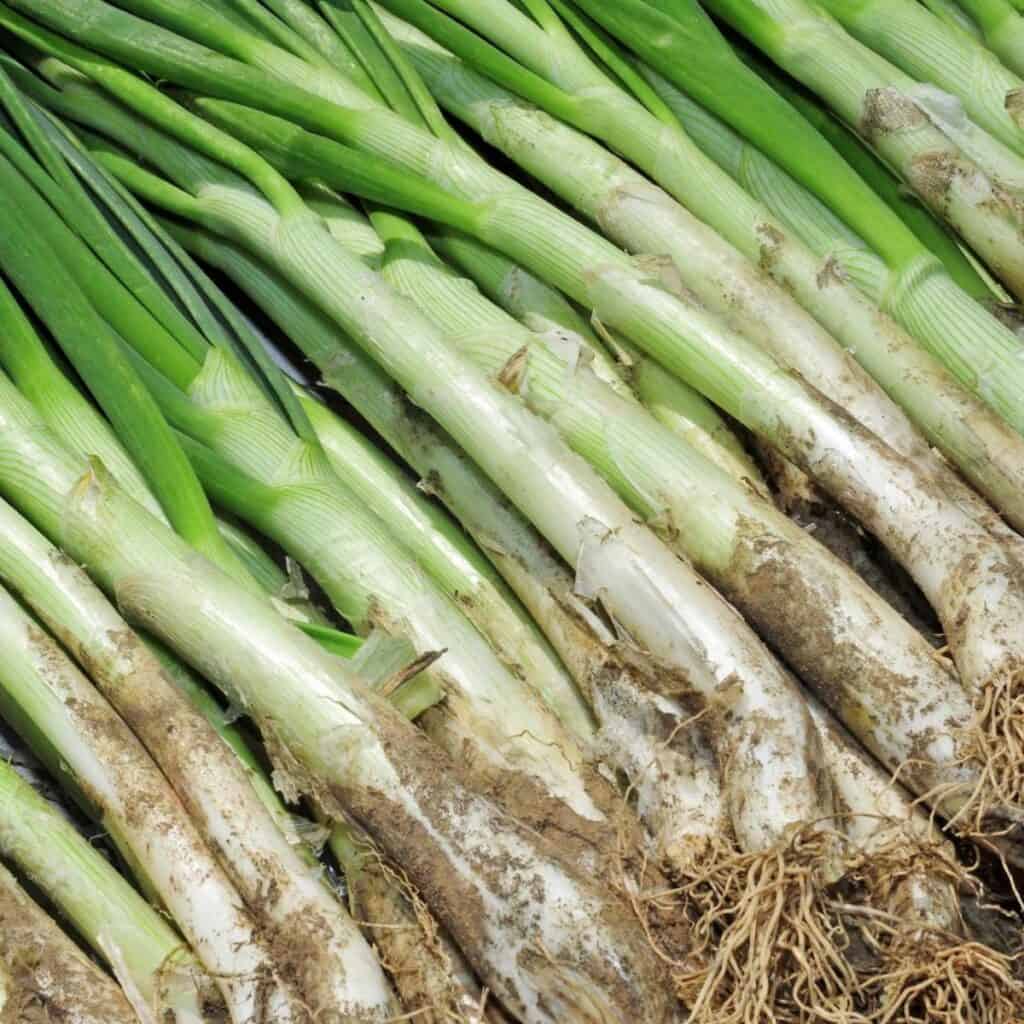

These vegetables prefer full sun and well-drained soil. They can be planted either from seeds or by using onion sets.
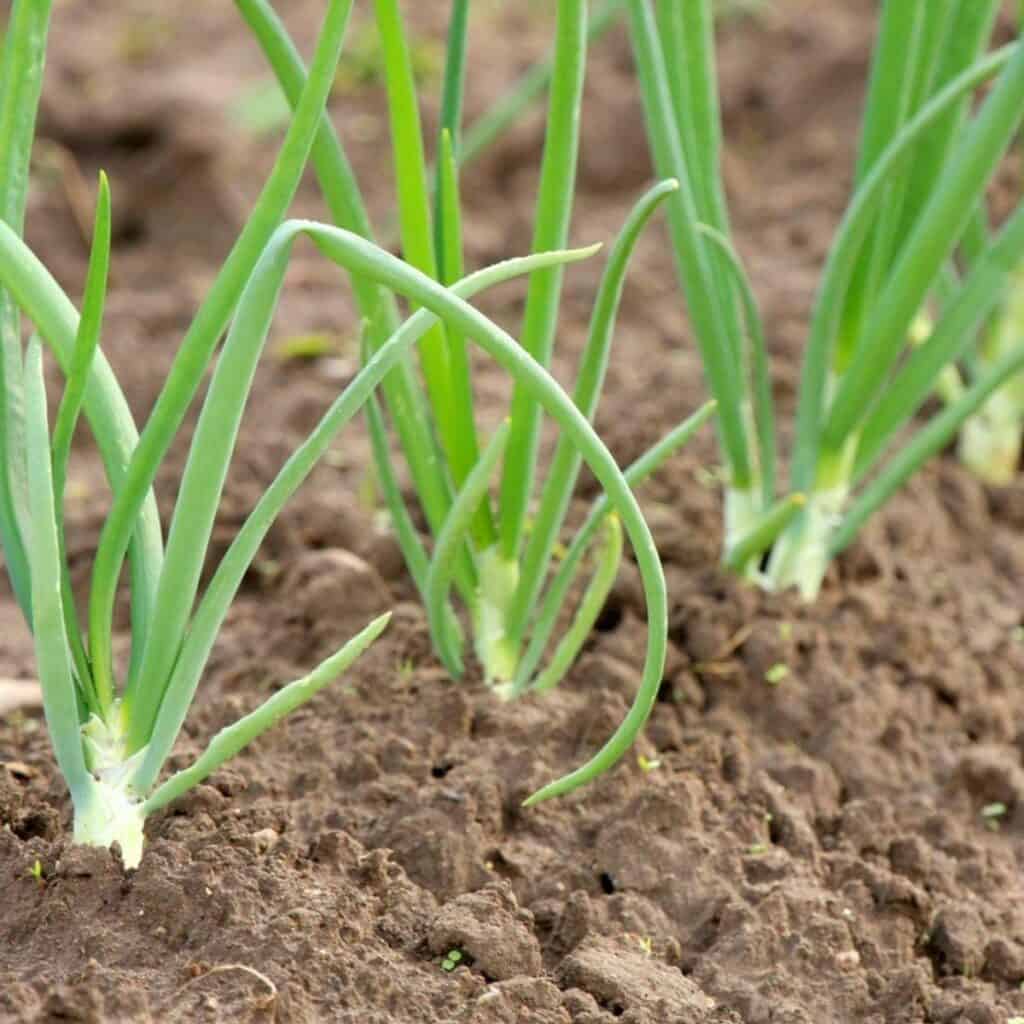

With proper care, scallions can be ready to harvest in six to eight weeks.
They are versatile and can be used in salads, soups, and many dishes. Their mild flavor enhances a variety of meals.
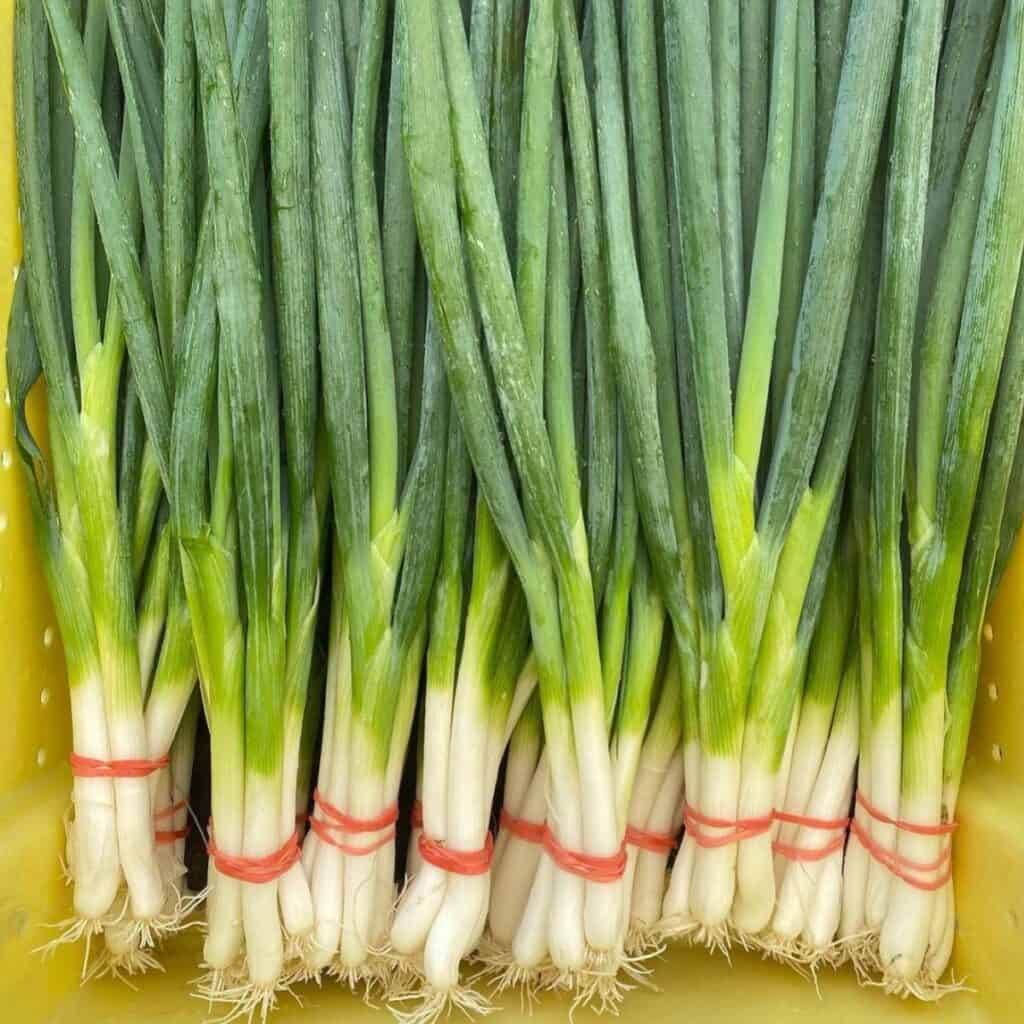

Scallions can also be regrown from the roots in water, providing an easy way to keep them on hand.
Benefits Of Planting Vegetables In August
Planting vegetables in August offers several advantages for gardeners who want to maximize their harvest. This time of year allows the extension of the growing season, takes advantage of optimal weather conditions, and can lead to increased yields.
Extended Growing Season
- August provides a unique opportunity to extend the growing season. Many cool-season vegetables thrive when planted now.
- By starting these crops late in summer, gardeners can enjoy fresh produce well into the fall and even winter months.
- Crops like kale and collards can be planted now and harvested later. The longer days and warming soil help seedlings establish strong roots before colder temperatures set in.
- This timing is particularly beneficial for areas with shorter growing seasons. With careful planning, crops planted in August can mature just in time for autumn meals.
Optimal Weather Conditions
The weather in August is often perfect for planting. Rising temperatures and adequate rainfall are ideal for seed germination and growth.
Vegetables such as arugula and celeriac can thrive during this period.
As daytime temperatures start to cool, the risk of heat stress diminishes. This means that vegetables can grow without struggling in the peak summer heat.
Additionally, planting in August helps crops grow before the frost comes. This timing allows gardeners to make the most of the late summer warmth for strong growth.
Increased Yield
- August planting can lead to increased yields of certain vegetables. Fast-growing varieties are well-suited for this time of year.
- Crops like lettuce and spinach can be sown now, providing multiple harvests within a short time frame.
- Using techniques such as succession planting can further boost production.
- Gardeners can plant smaller seeds every couple of weeks to ensure a continuous supply of fresh vegetables.
- Cold-tolerant plants, such as collards, possess resilience against late-season weather changes. This hardiness often translates into higher yields when harvested before winter.
Preparing Your Garden For Fall Harvest
Preparing a garden for fall harvest involves several key steps. Focusing on soil preparation, choosing the right location, and proper fertilization is crucial to ensure a thriving garden.
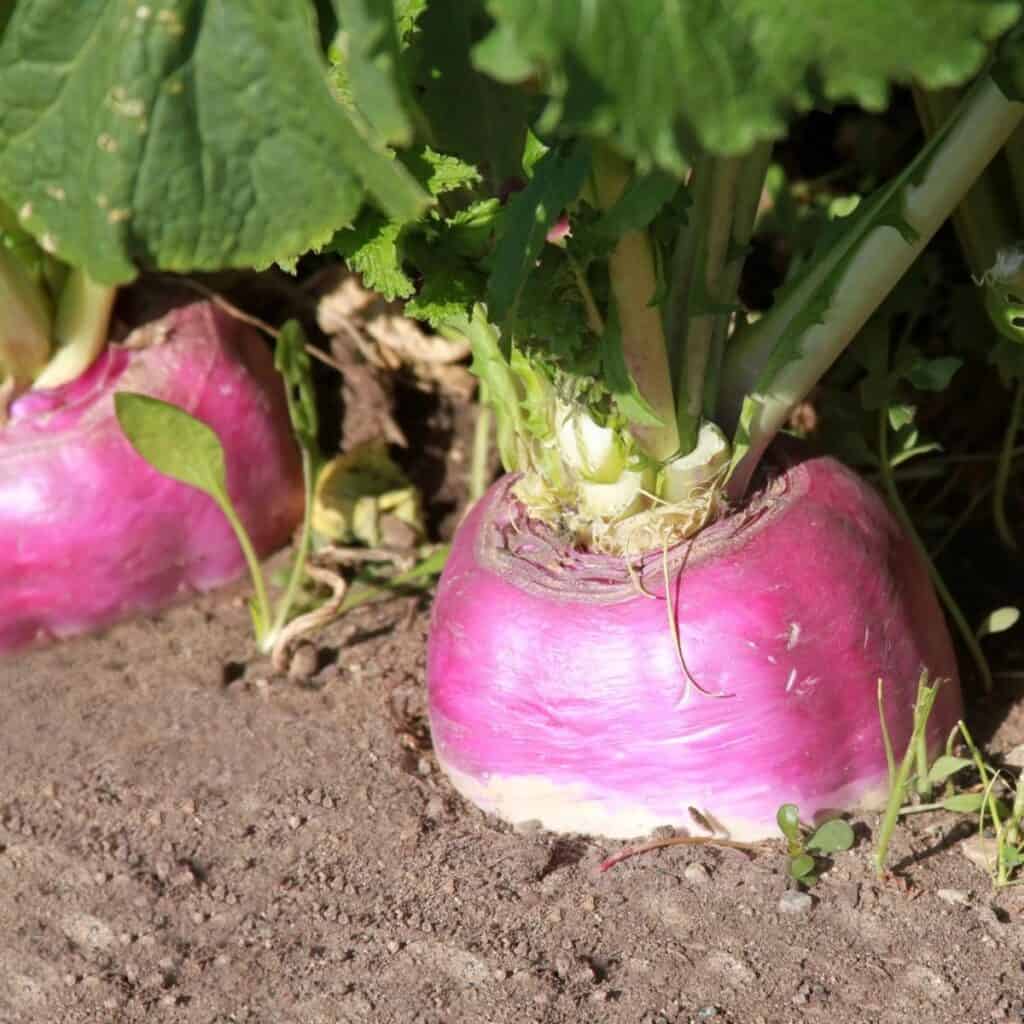

Soil Preparation
Soil preparation is critical for a successful fall harvest. Gardeners should start by testing the soil pH. A pH of 6.0 to 6.8 is ideal for many fall vegetables.
- Add organic matter, such as compost or aged manure, enhances soil fertility.
- Remove any weeds or leftover plants from previous crops to prevent disease and pests.
- Till the soil can improve aeration and drainage. This process helps roots grow deeper and access nutrients.
- Consider using a soil conditioner if the soil is compacted. This improves overall soil structure, making it easier for roots to penetrate.
- A well-prepared bed leads to healthier plants.
Choosing The Right Location
Choosing the right location is also key. Most fall vegetables need full sun exposure, ideally 6-8 hours of sunlight daily.
The location should also have good air circulation to prevent moisture from sitting around the plants. This can help reduce the risk of diseases like mildew and rot.
Gardeners should avoid low-lying areas where cold air settles, causing potential frost damage. Raised beds or gentle slopes can enhance drainage and uphold temperature stability. A well-chosen location allows plants to thrive in the fall months.
Fertilization Tips
Proper fertilization supports fall vegetable growth. Begin by choosing a balanced fertilizer with equal parts nitrogen, phosphorus, and potassium. This ensures that plants receive the necessary nutrients.
Additionally, side-dressing with compost or organic fertilizers during the growing season can provide plants with a steady nutrient supply. Regular monitoring of plant health helps identify nutrient deficiencies.
Watering is also essential after applying fertilizers. This helps nutrients soak into the soil and reach the roots effectively. Heavier feeders like cabbage or broccoli may require more attention to nutrition. Proper fertilization encourages robust growth and better yields in the fall harvest.
Common Challenges and Solutions
Gardening in August can be tricky for growing vegetables. However, addressing these challenges can lead to a more successful fall harvest. To ensure your vegetables thrive, focusing on pest control, adapting to changing weather, and managing diseases effectively is essential.
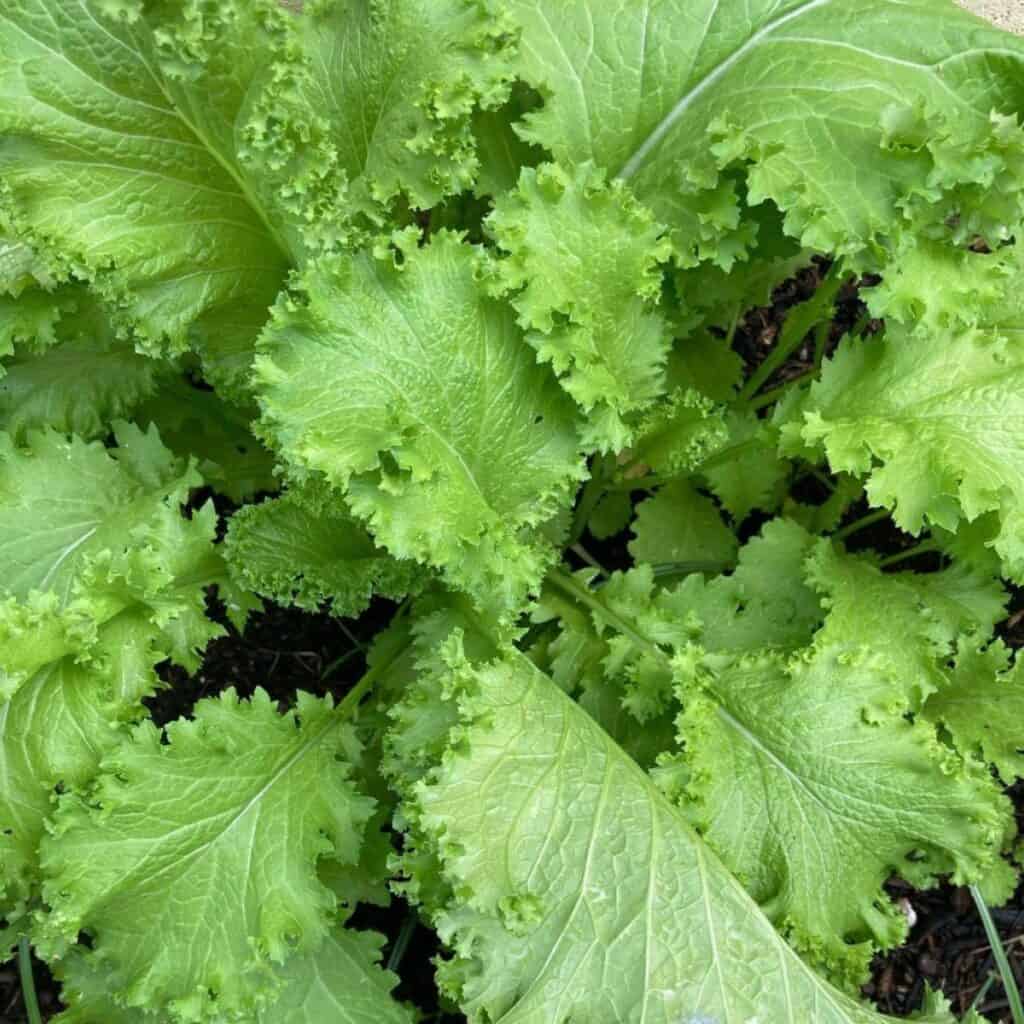

Pest Control
Pests can cause a lot of harm to vegetable crops. In August, common pests include aphids, squash bugs, and cabbage worms. To manage these pests, gardeners should regularly check their plants for any signs of infestation.
Using companion planting can help deter certain pests. For example, planting marigolds near vegetables can repel nematodes and aphids. Additionally, introducing beneficial insects, such as ladybugs and lacewings, can naturally control pest populations.
Applying insecticidal soap or neem oil as a spot treatment can also reduce pest numbers without harming beneficial insects. Regular monitoring and early intervention are key strategies for keeping pests at bay.
Weather Adaptation
August weather can be unpredictable, which makes it essential for gardeners to adapt. High temperatures can stress plants, while unexpected rain can lead to overwatering.
To protect against heat, gardeners may use row covers or shade cloths to shield young plants. Ensuring proper soil moisture is also vital.
Deep watering during cooler parts of the day can encourage deeper root growth and establish drought resistance. In areas prone to heavy rain, raised beds improve drainage and reduce root rot risks.
Mulching helps retain soil moisture and regulates temperature. Adjusting watering schedules based on weather forecasts can aid in optimal plant health.
Disease Management
Managing diseases is crucial for a successful garden. Fungal diseases like powdery mildew and blight often appear in warm, humid conditions, especially in late summer.
To prevent these diseases, gardeners should practice crop rotation and avoid planting the same vegetable in the same spot year after year. Proper spacing between plants allows for better air circulation, reducing humidity levels around leaves.
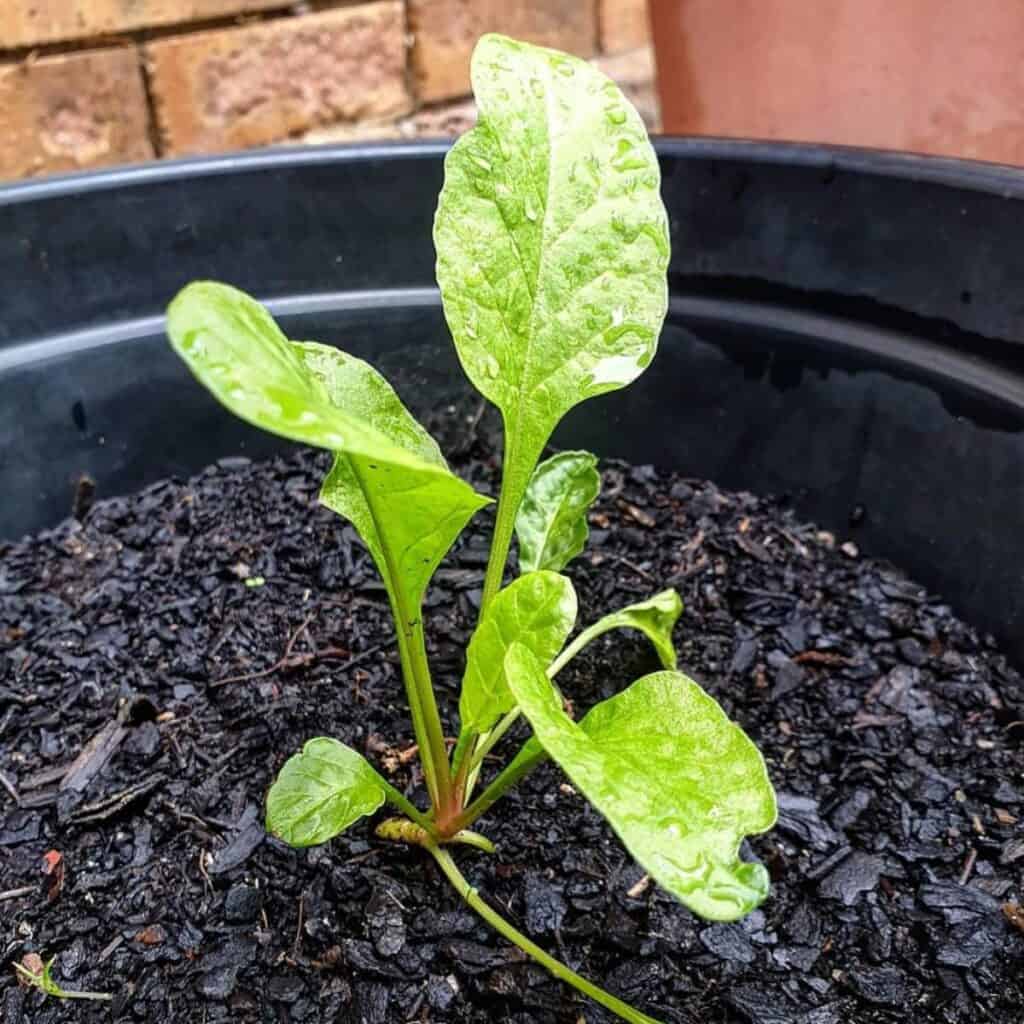

Using disease-resistant varieties can also help lower the risk of diseases. Regularly removing dead or infected plant material can prevent diseases from spreading.
Harvesting in dry conditions and avoiding overhead watering can also help keep plants healthy. Taking proper care during this time can help ensure a successful fall harvest.
Harvesting Tips For Fall Vegetables
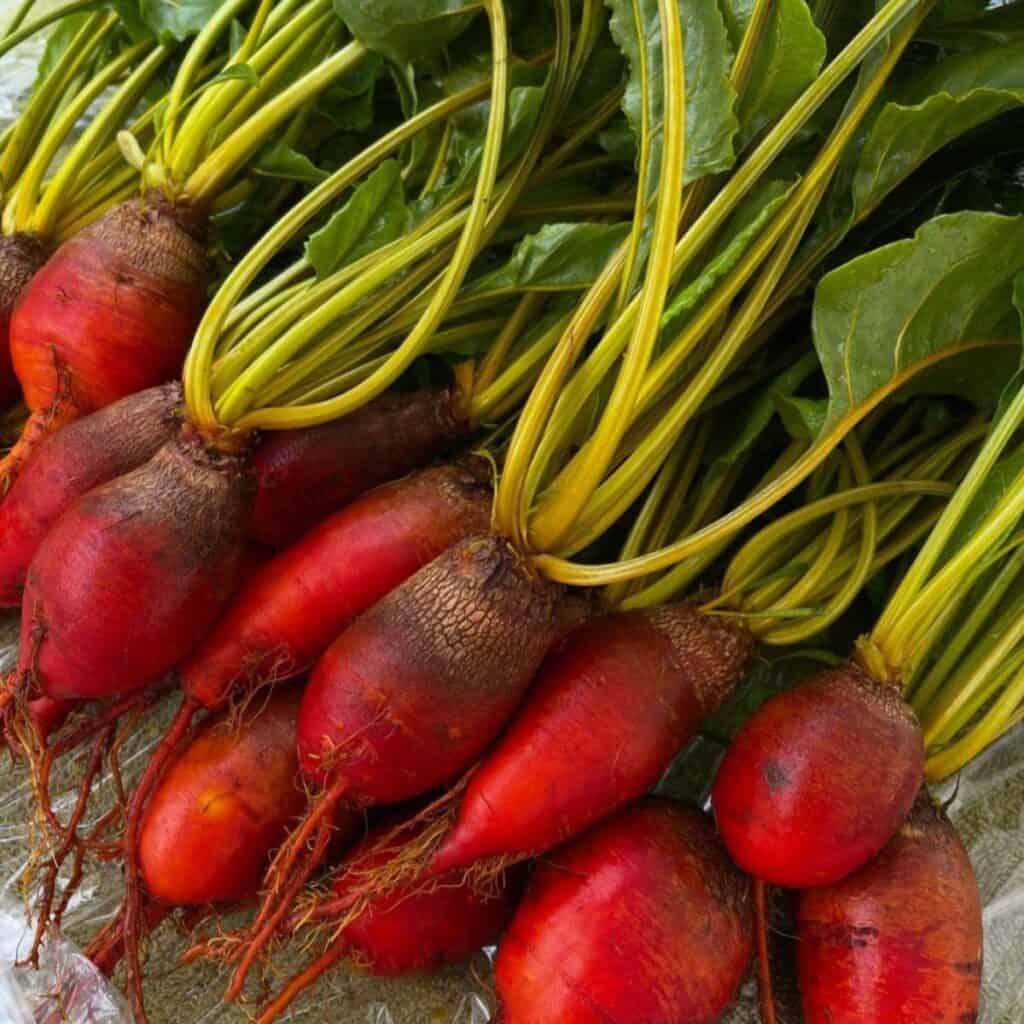

Harvesting fall vegetables at the right time and storing them properly can enhance their flavor and shelf life. Timing is crucial for getting the best taste and quality, while smart storage keeps them fresh longer.
Timing The Harvest
Knowing when to harvest fall vegetables is key. Each type has its ideal harvest time.
- Broccoli: It is ready when the florets are tight and green. Harvest before they begin to flower.
- Collards: Leaves can be picked any time after they reach a usable size, usually around 60 days after planting.
- Swiss Chard: This vegetable can be harvested continually. Take the outer leaves while leaving the inner leaves to grow.
- Arugula: It is best harvested young for a strong flavor. Cut when leaves are about 3-4 inches long.
Timing varies with weather. Monitor the temperature and growth patterns.
Proper Storage Techniques
Proper storage keeps fall vegetables fresh for longer.
- Broccoli: Store in the refrigerator in a plastic bag for up to one week. Avoid washing until ready to use.
- Collards and Swiss Chard: Wrap in a damp paper towel and place in a plastic bag. This keeps the leaves crisp for up to a week.
- Celeriac: Store in a cool, dark place, like a basement or cellar, for several months.
Temperature and humidity affect storage. Ideally, a fridge’s vegetable crisper offers a good environment.
Always inspect stored vegetables for spoilage regularly.




